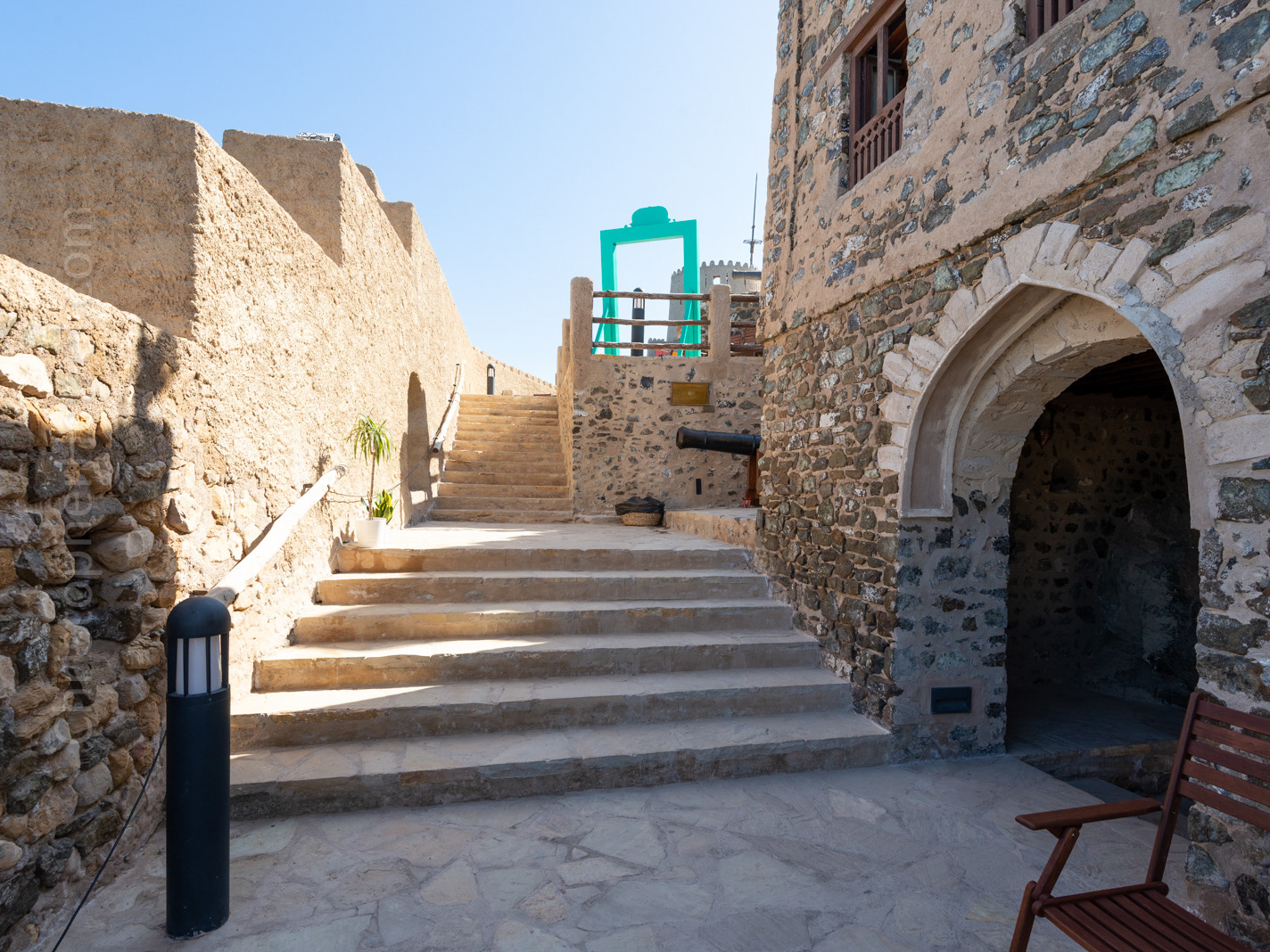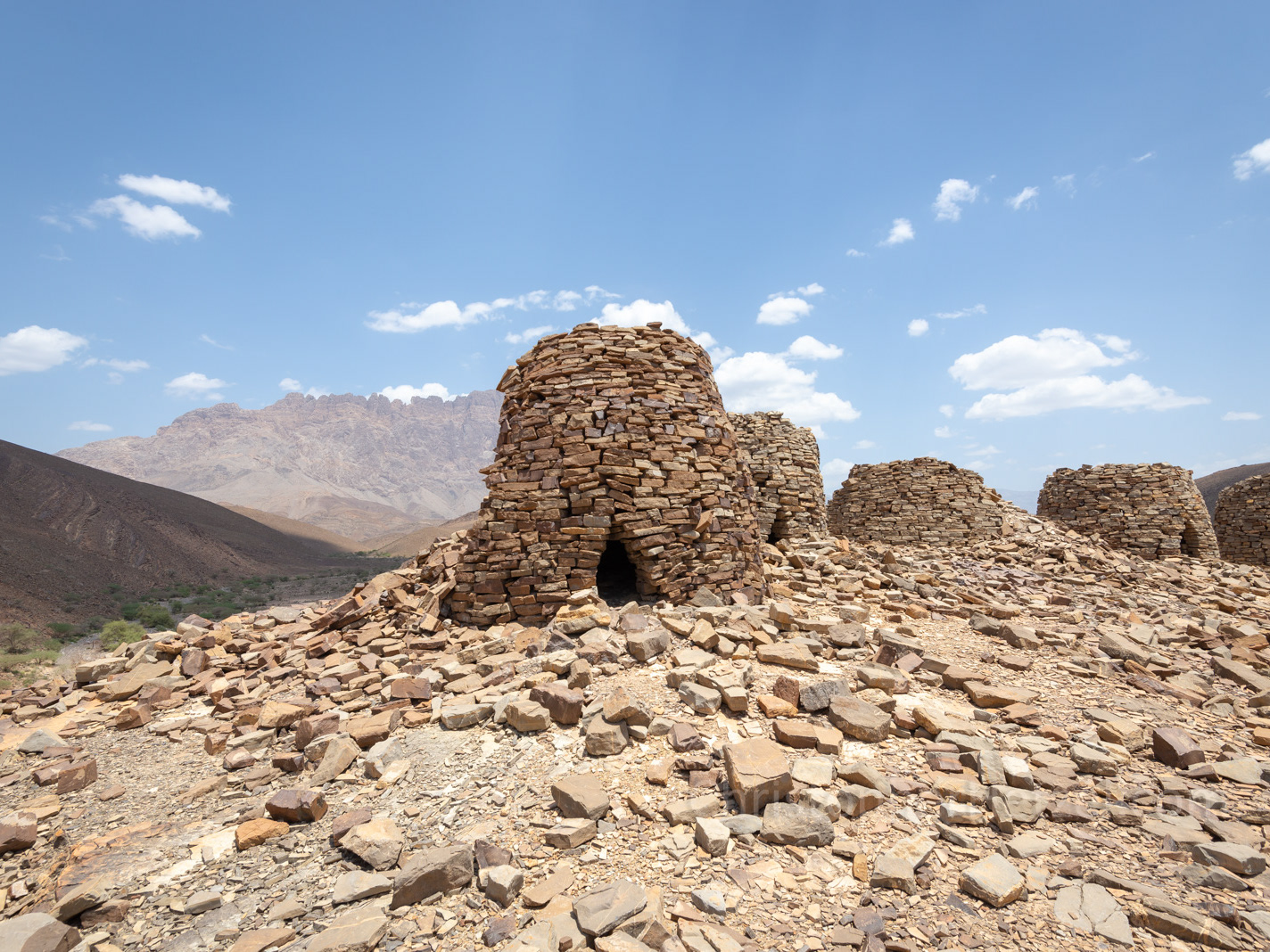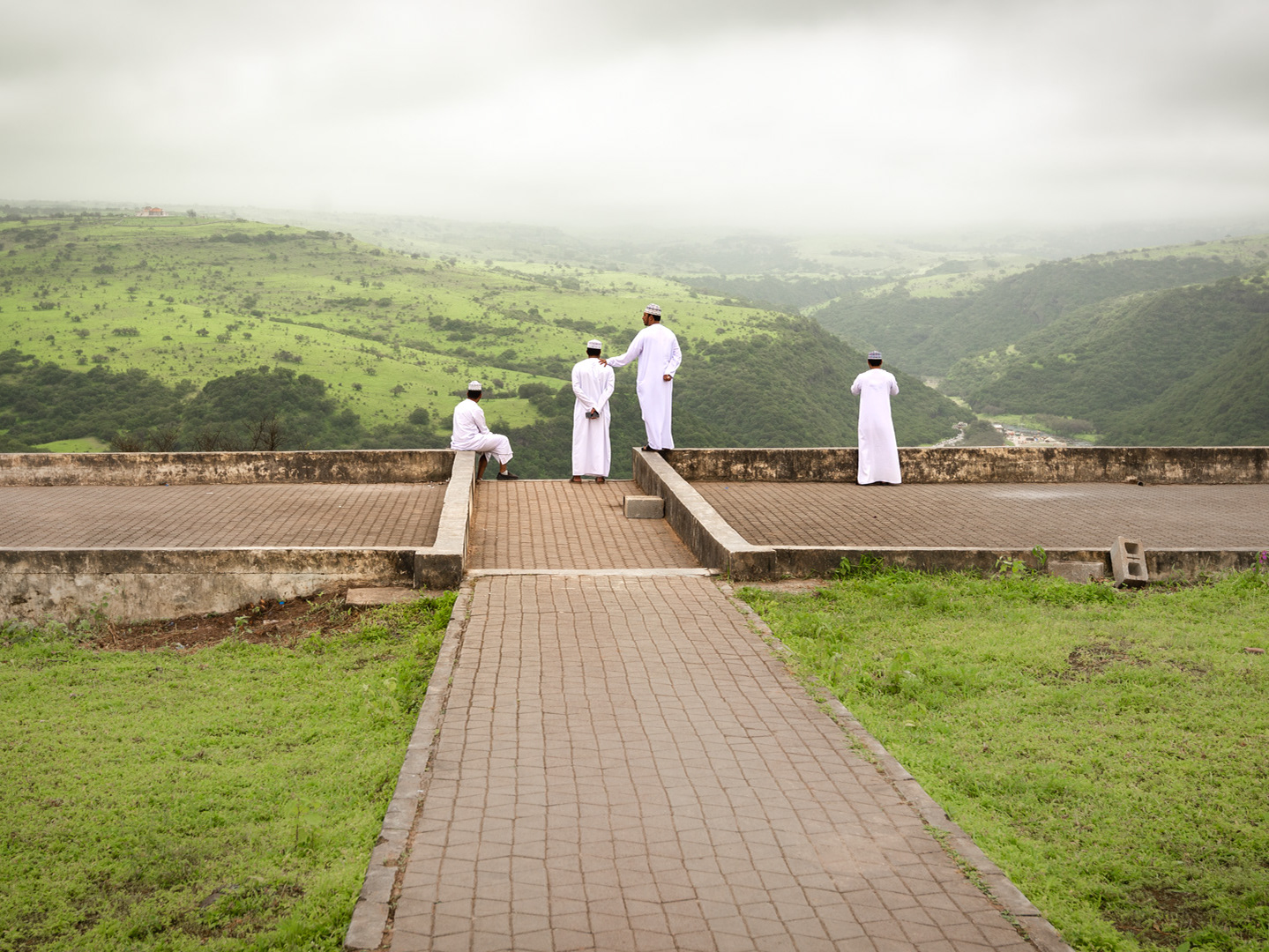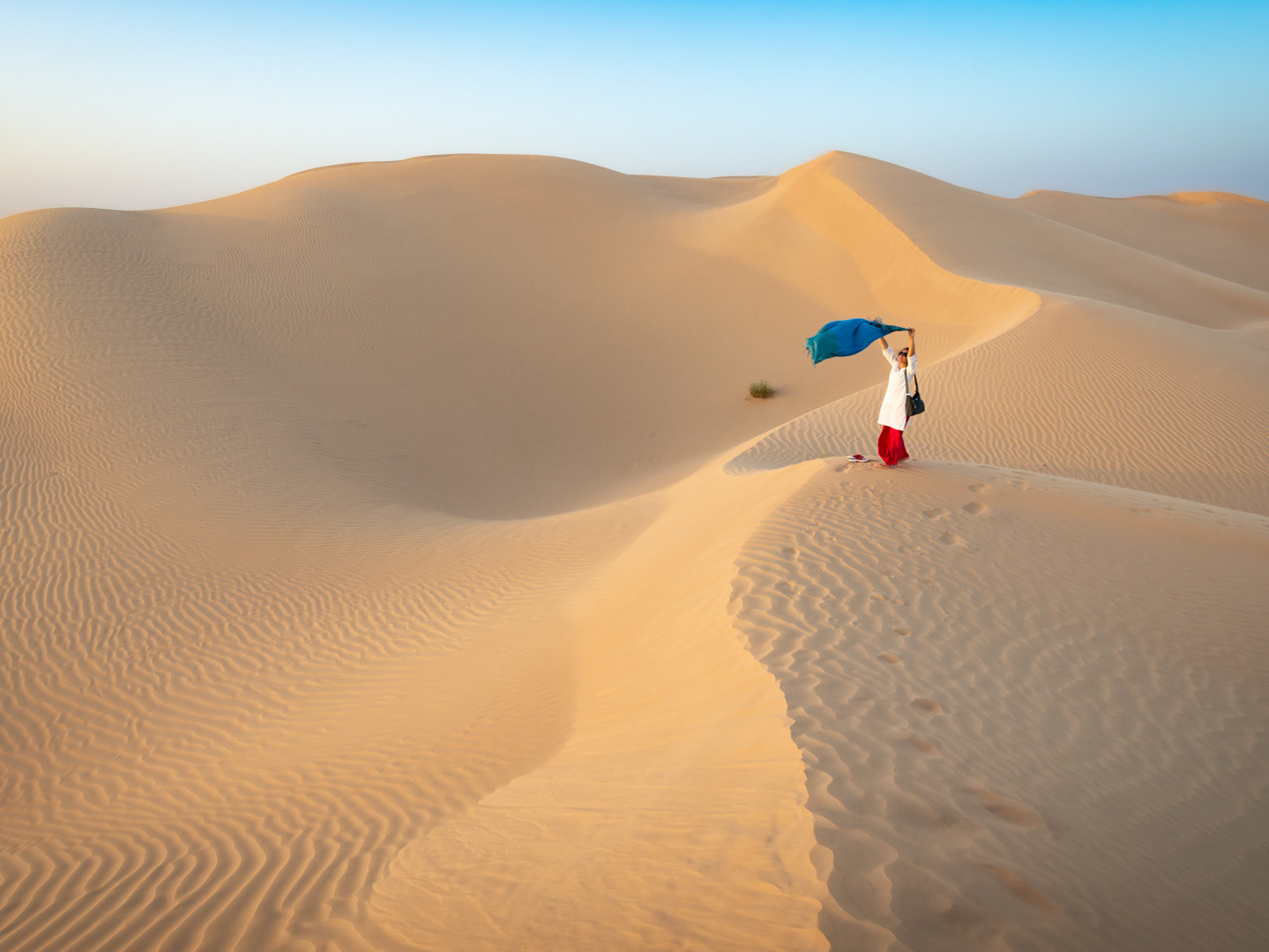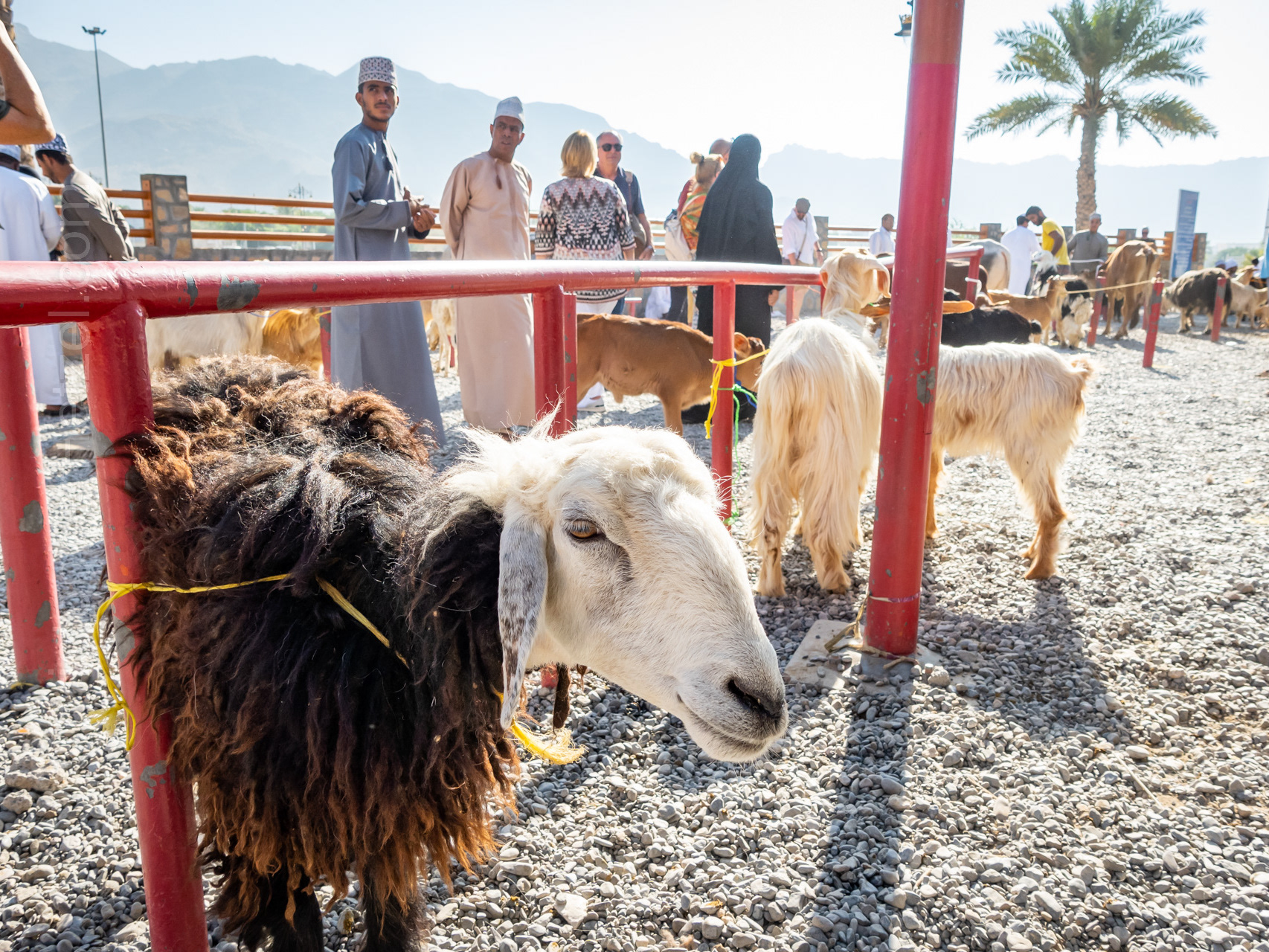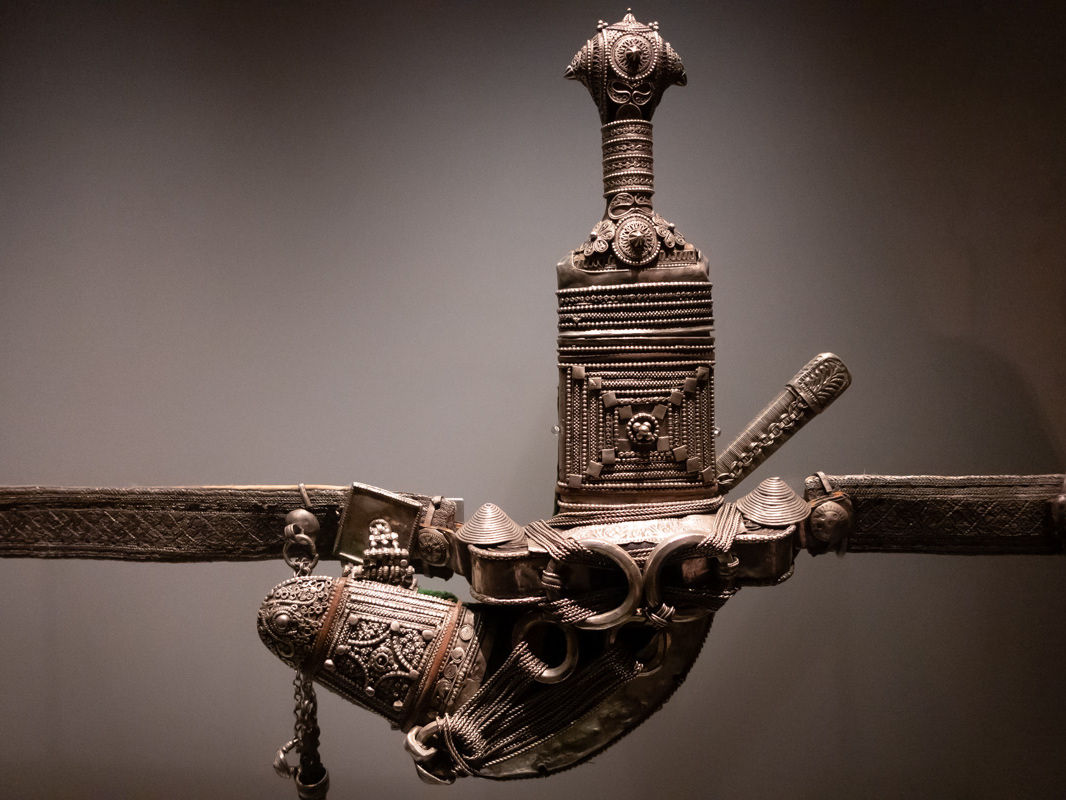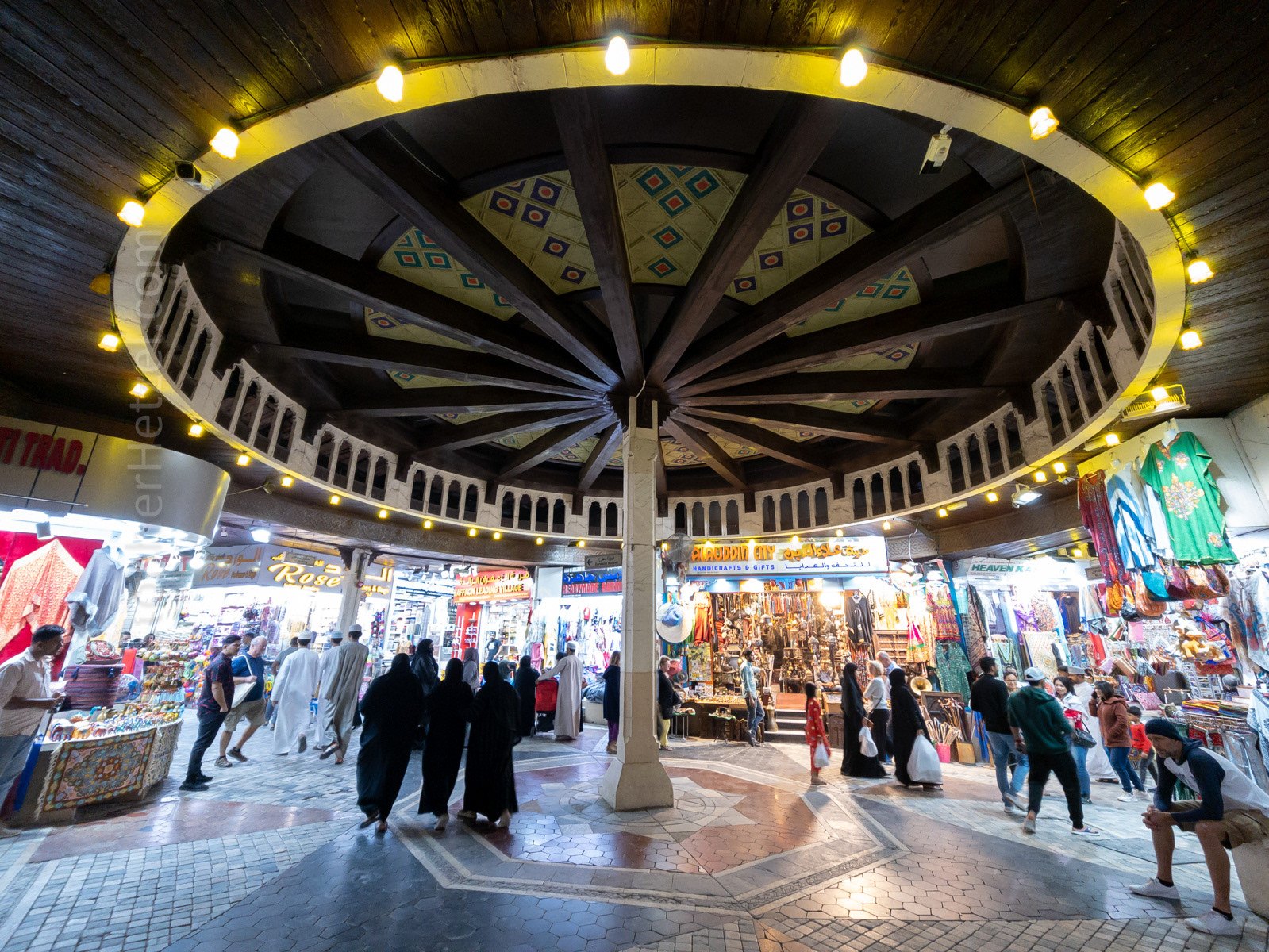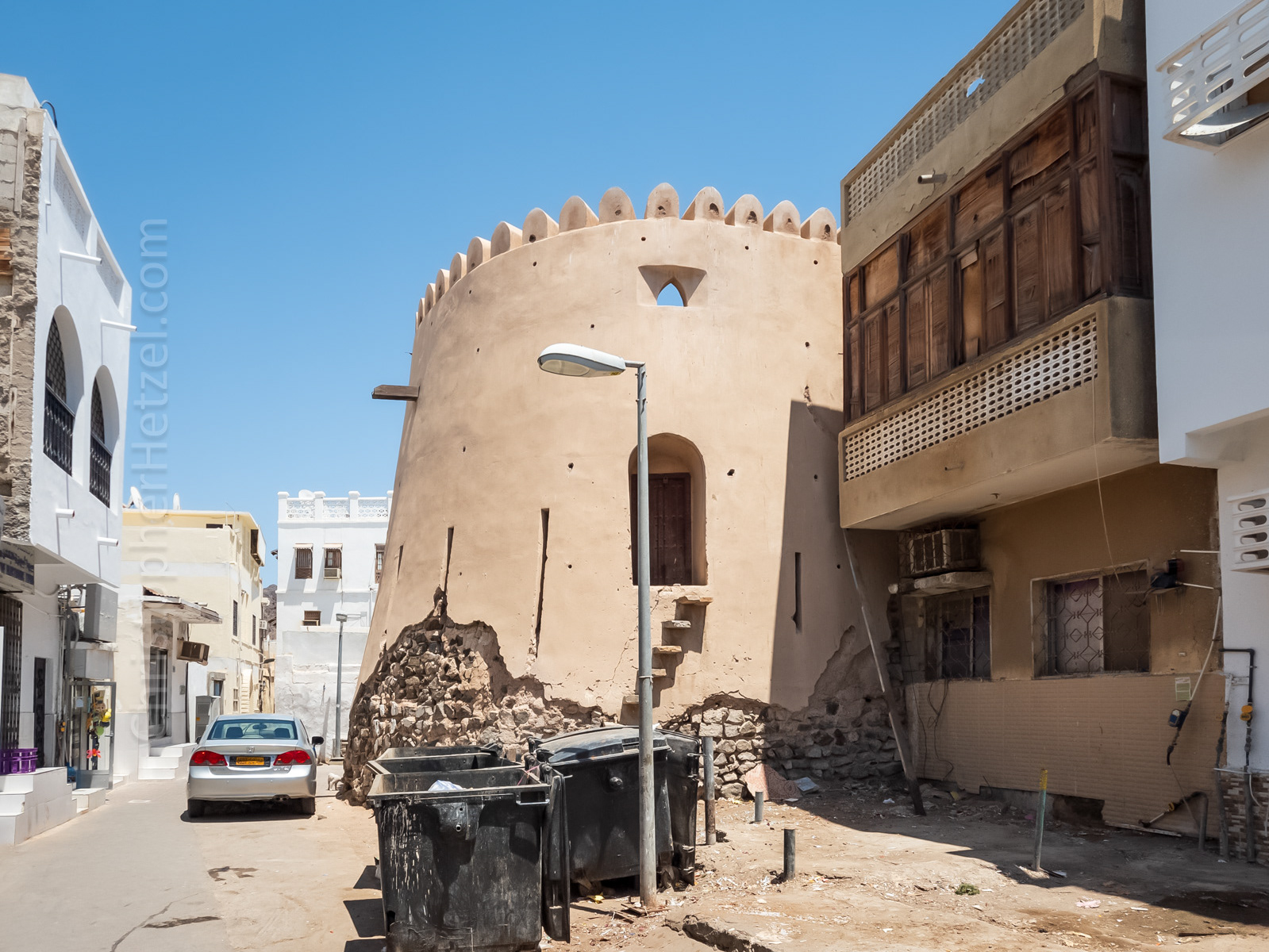The Sultan Qaboos Grand Mosque, located in Muscat, is the largest mosque in Oman, and among the largest in the world. It was completed in 2001 after six years of construction. The newly built Grand Mosque was inaugurated by Sultan Qaboos bin Said al Said, the then Sultan of Oman, to celebrate 30 years of his reign.
The mosque has four main sections: the men's prayer hall (or Musalla), a prayer hall for women, a library, and a lecture theatre. There are expansive gardens and exterior courtyards, and open-air arcades (called riwaqs) that flank the complex's main buildings on the north and south. Each arcade has decorated niches with tiling representing the different time periods and regions of the Islamic world. There is also an Islam Centre that welcomes visitors. The mosque is typically open to visitors six-days a week in the mornings. It is one of the main tourist attractions in Muscat, and Jennifer and I have visited a few times now with out-of-town friends.
The mosque is built from 300,000 tons of Indian sandstone. The main prayer hall is 244 feet (74.4 meters) square with a central dome rising to a height of 160 feet (50 meters) above the floor. The dome and the main minaret and four flanking minarets are the mosque’s chief visual features. The minarets symbolize the five pillars of Islam.
The main prayer hall can accommodate over 6,500 worshippers, while the women's prayer hall can hold 750 worshipers. The exterior outer courtyard can hold 8,000 worshipers and there is additional space available in the interior courtyard and the passageways, making a total capacity of up to 20,000 worshipers.
The carpet in the main hall, which was weaved by hand in Iran by approximately 600 female weavers, is among the the largest carpets in the world. A single piece, it weights 21 tons and required four years to make. The carpet's design combines classical Persian Tabriz, Kashan and Isfahan design traditions. Twenty-eight colors in varying shades were used, the majority obtained from traditional vegetable dyes.
The chandelier was manufactured by the Italian company Faustig in Germany, and is one of the largest chandeliers in the world. It is 14 meters high, weighs 8 tons, contains 1,122 bulbs complete with a dimming system, and includes 600,000 Swarovski crystals imported from Austria. It also has a staircase for maintenance within the chandelier. Thirty-four smaller chandeliers of the same design are hung in other parts of the building.
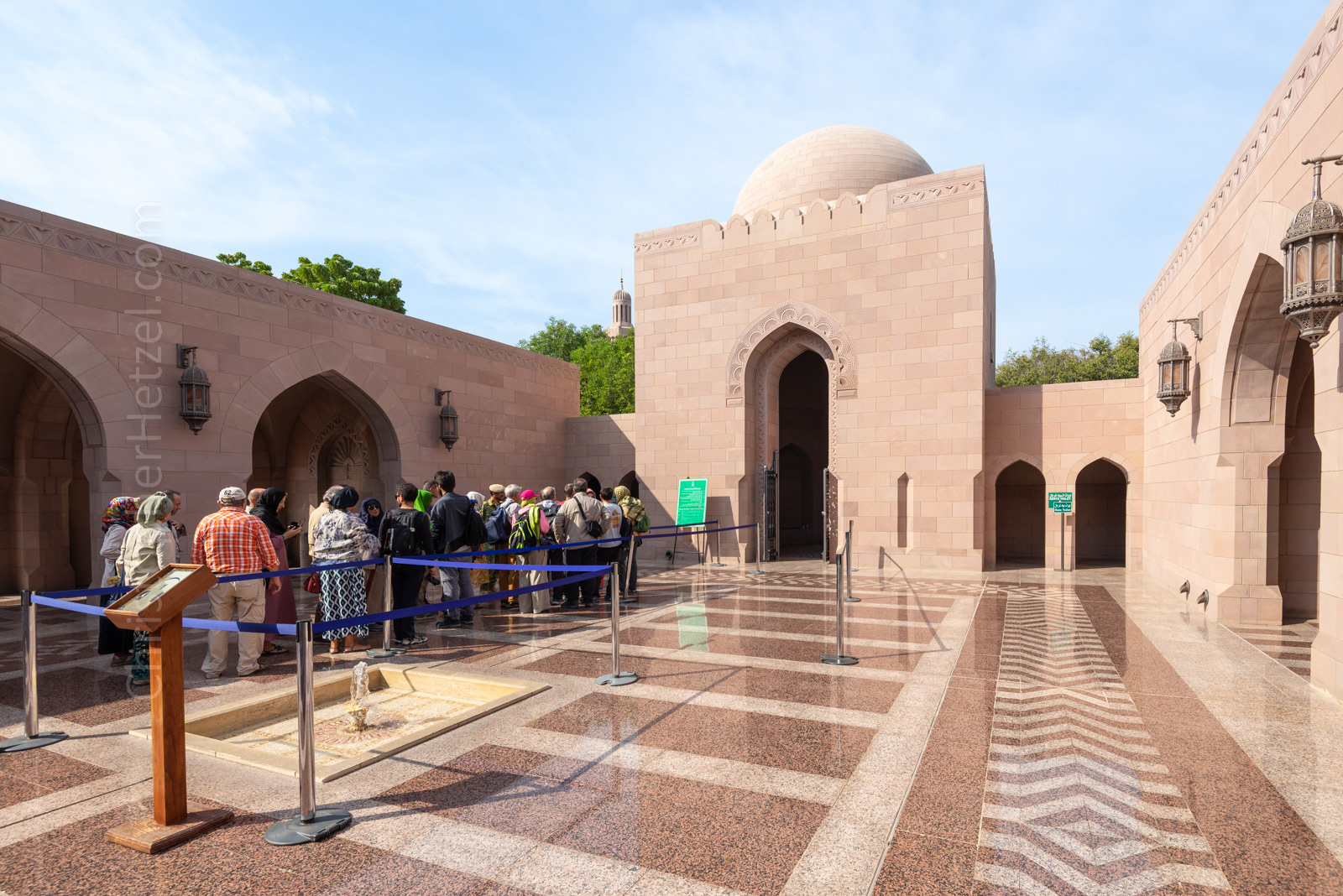
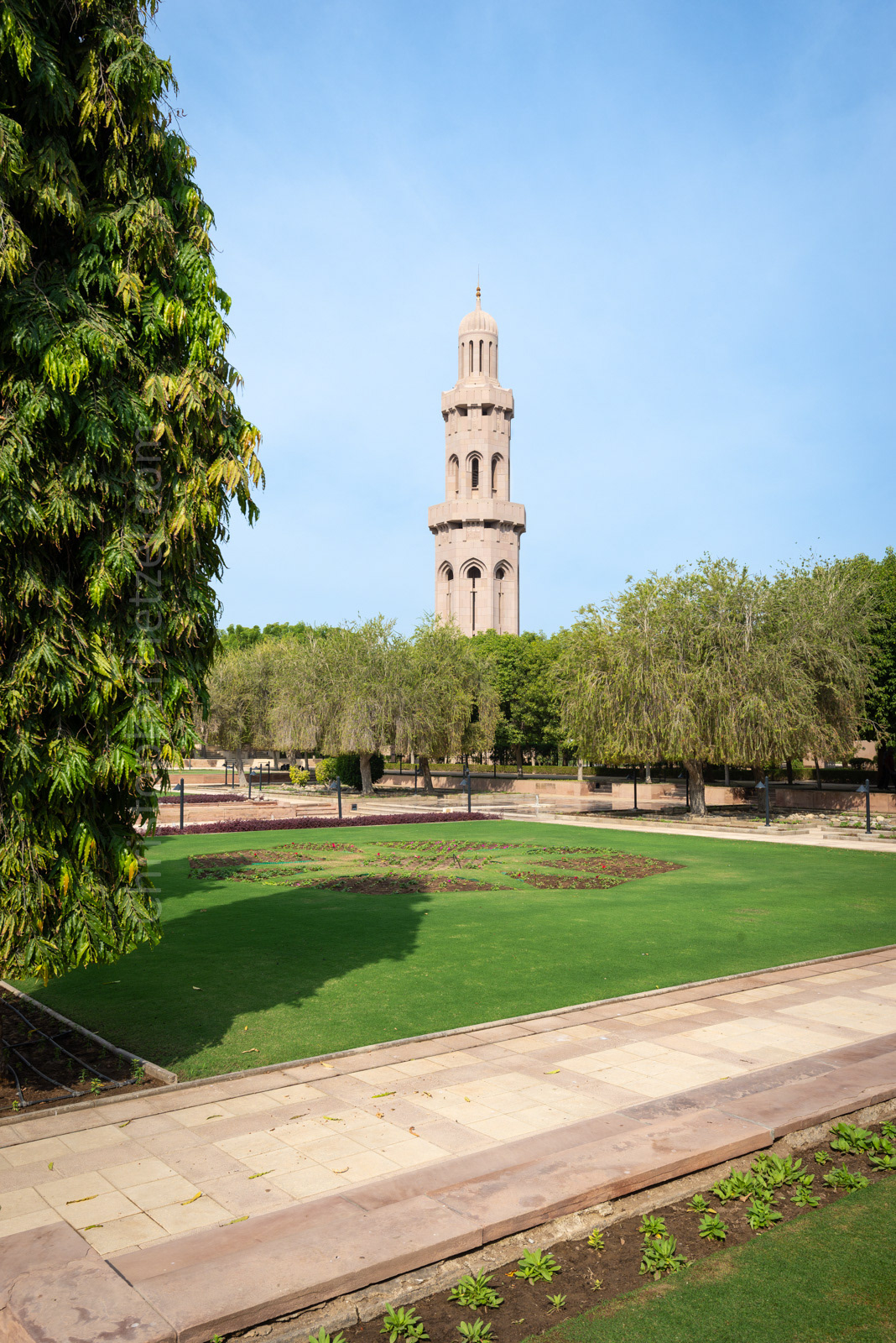
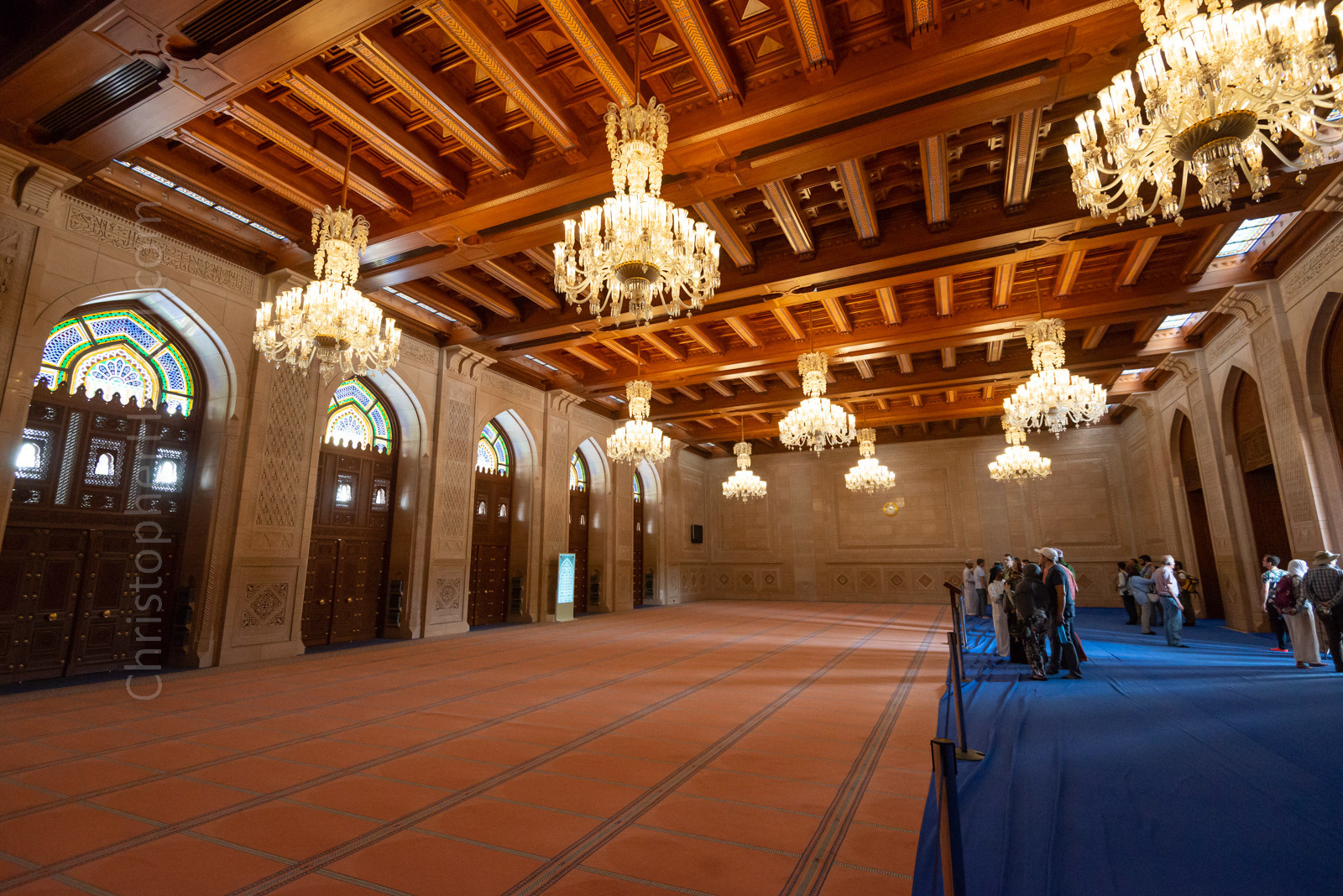
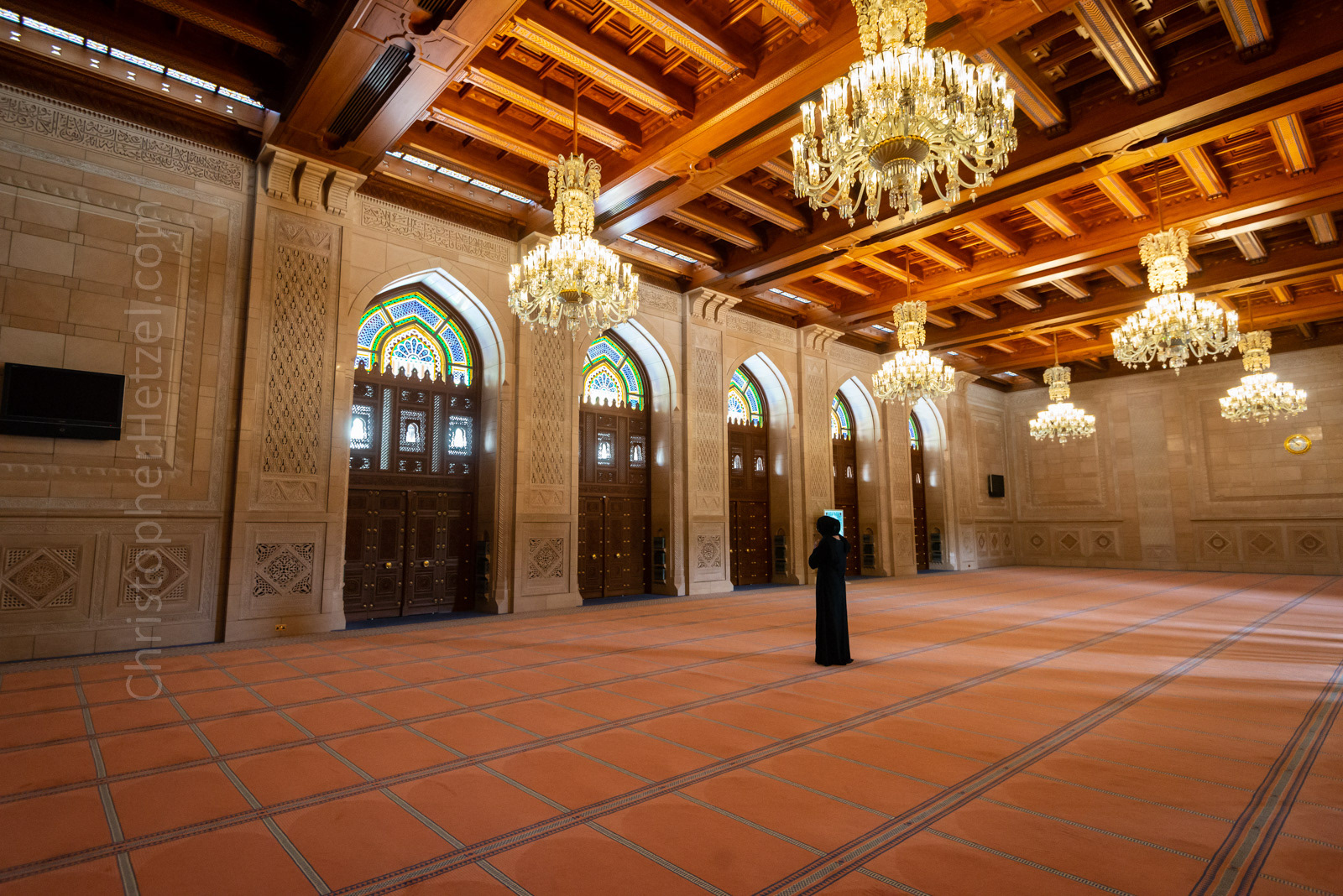
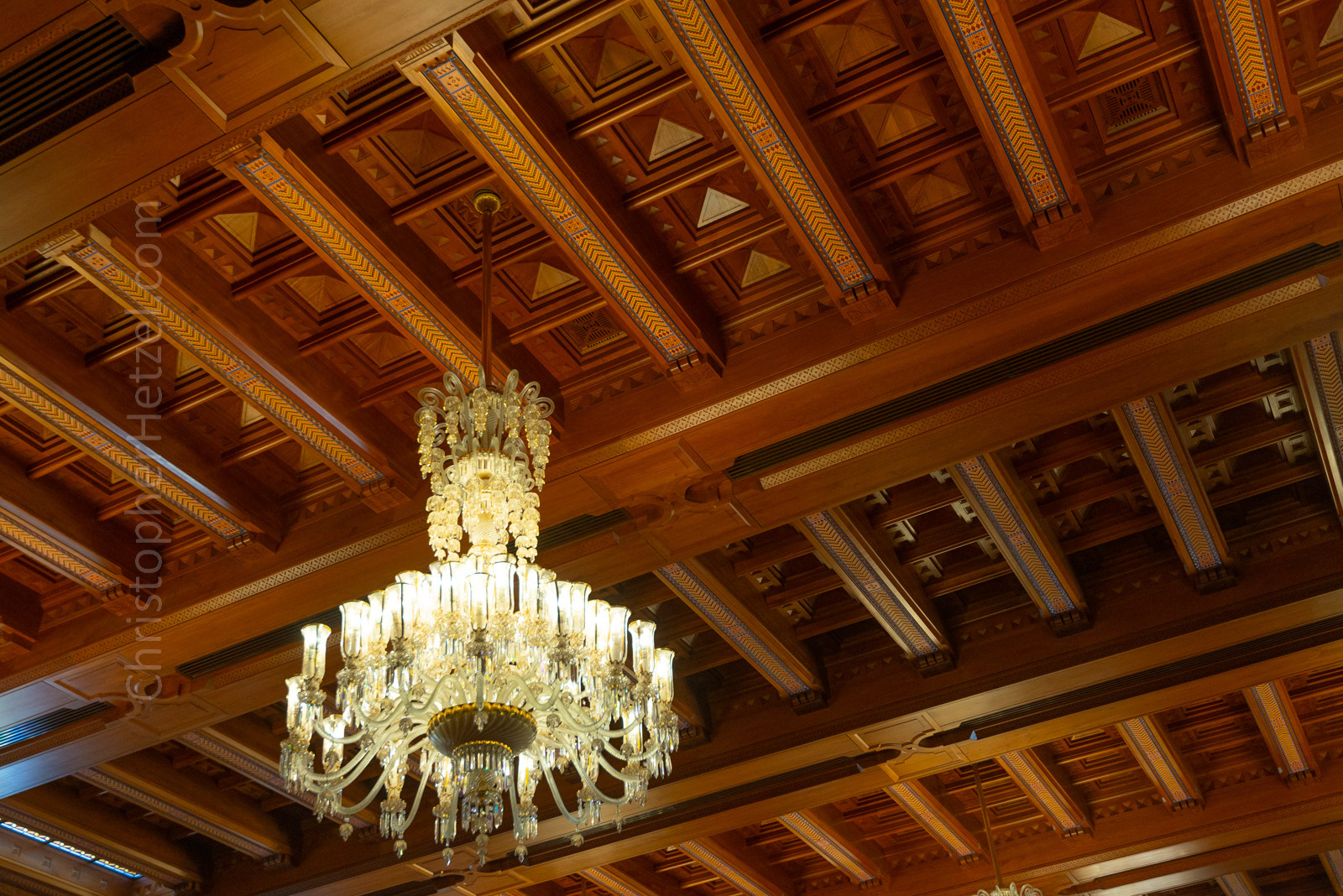
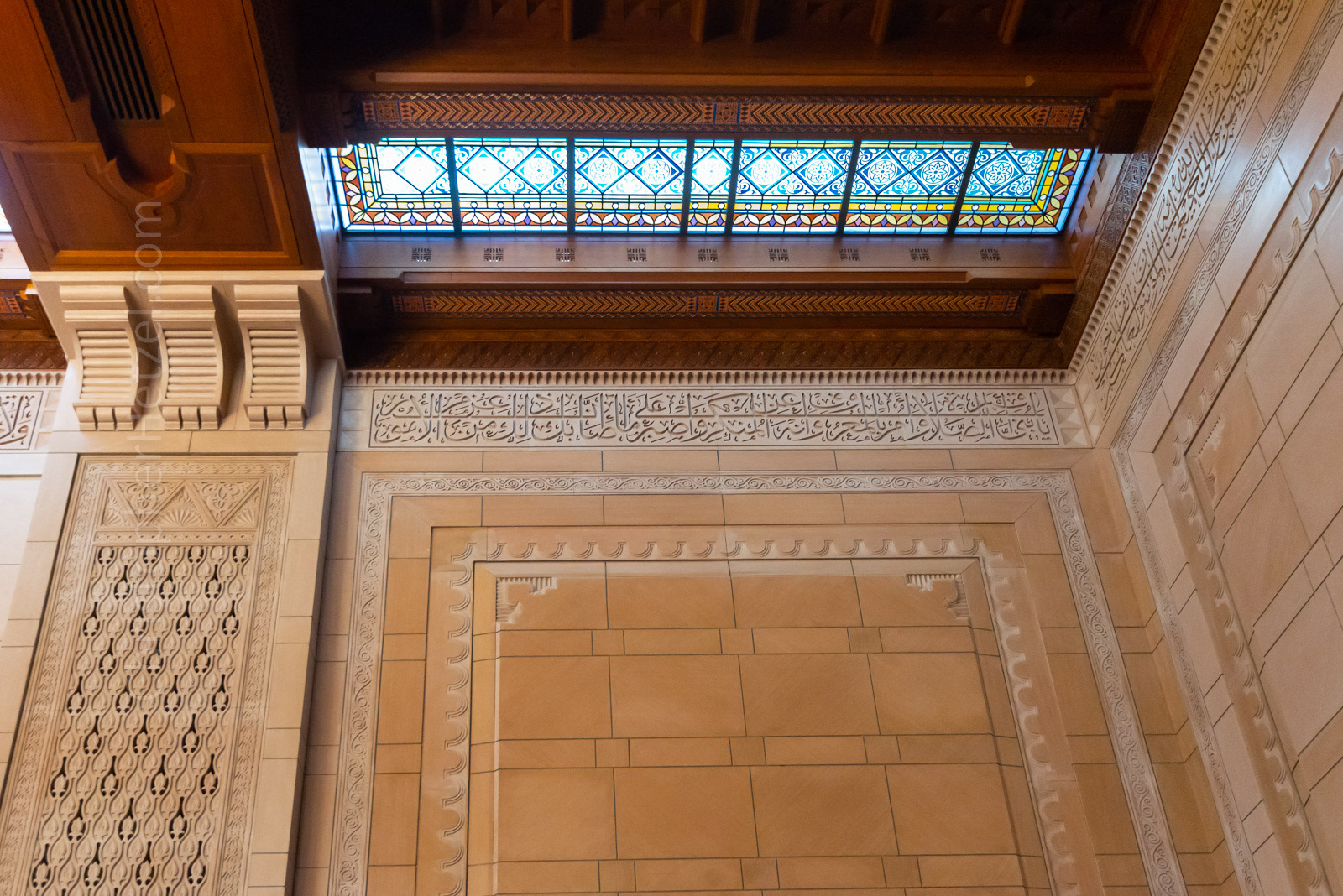
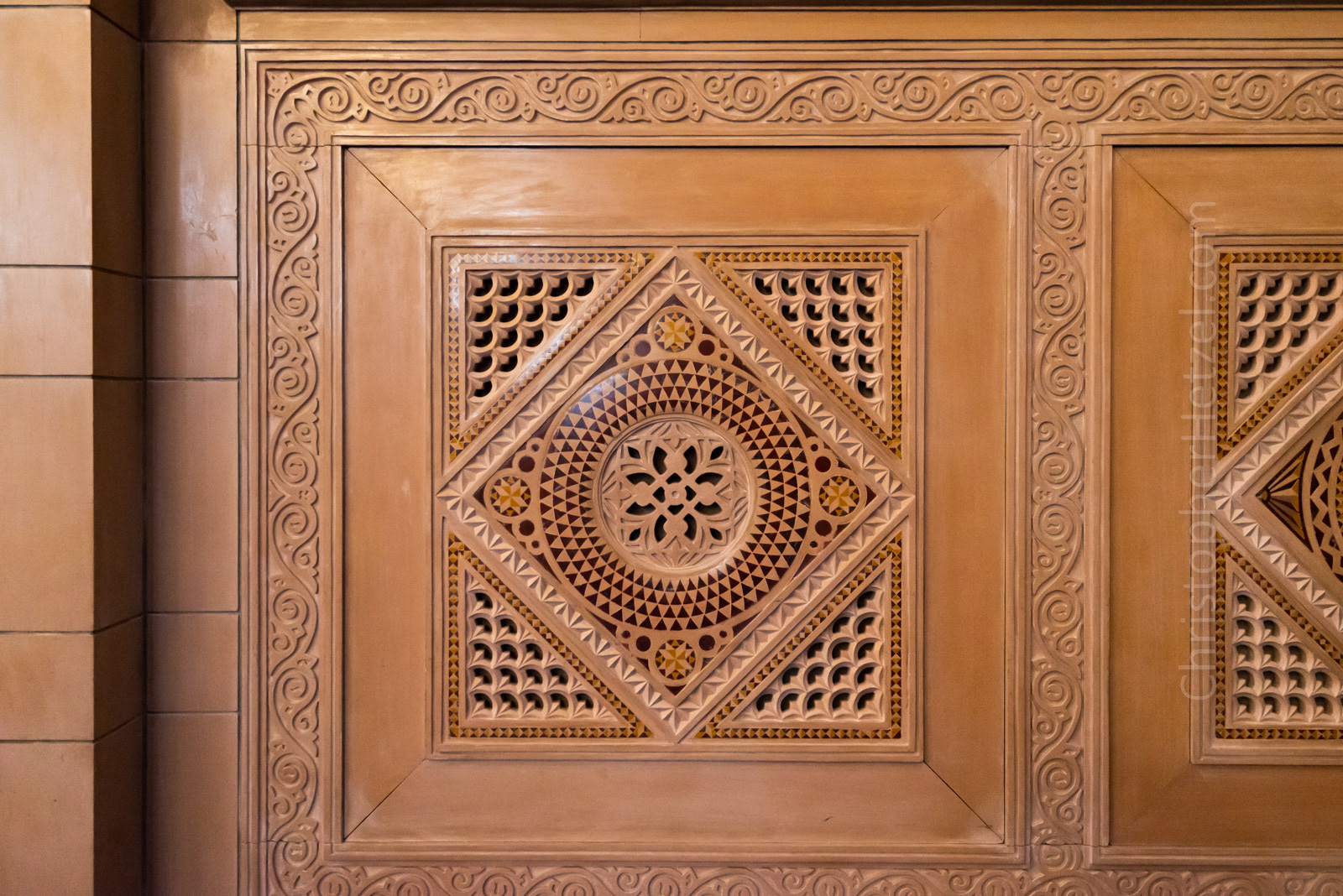
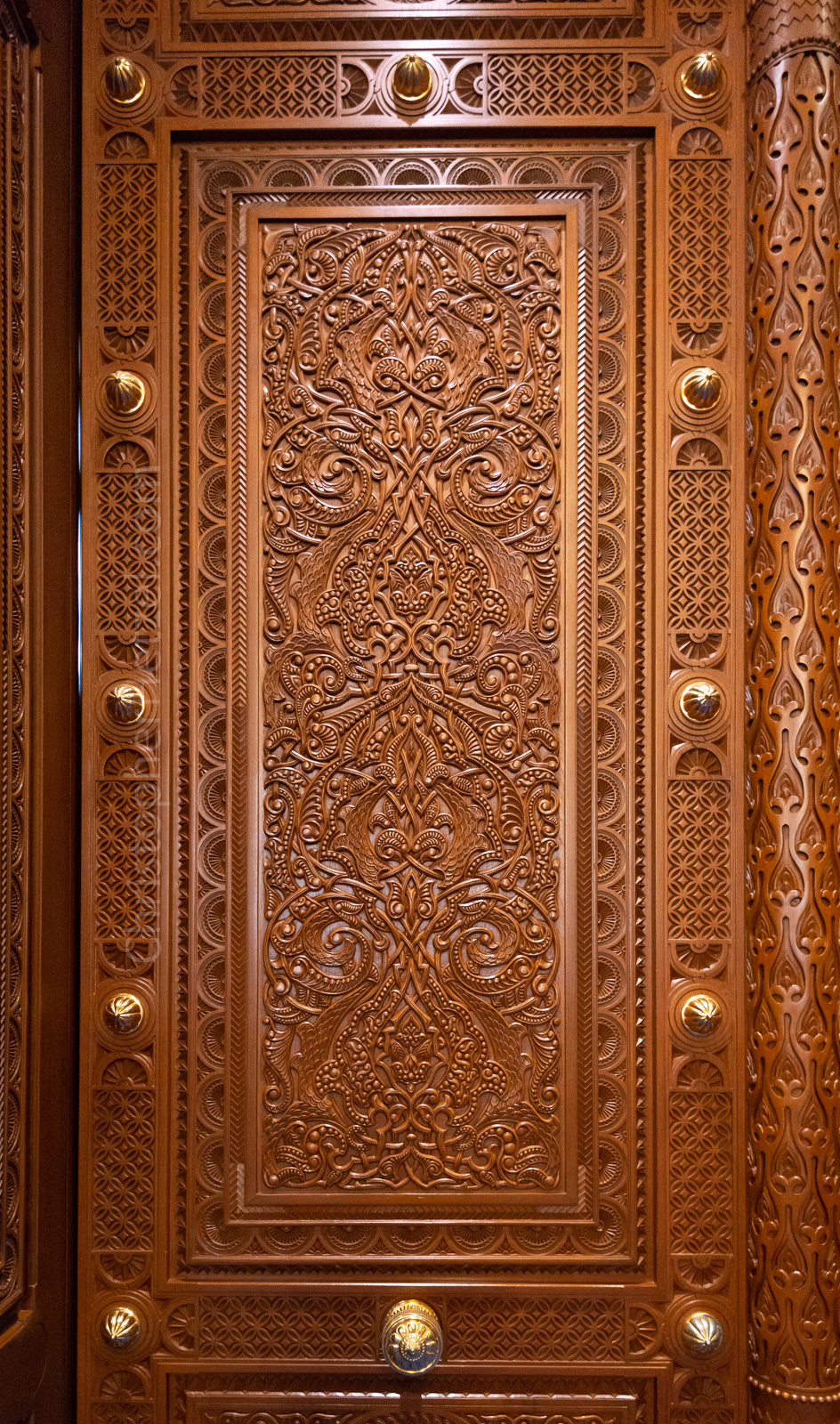
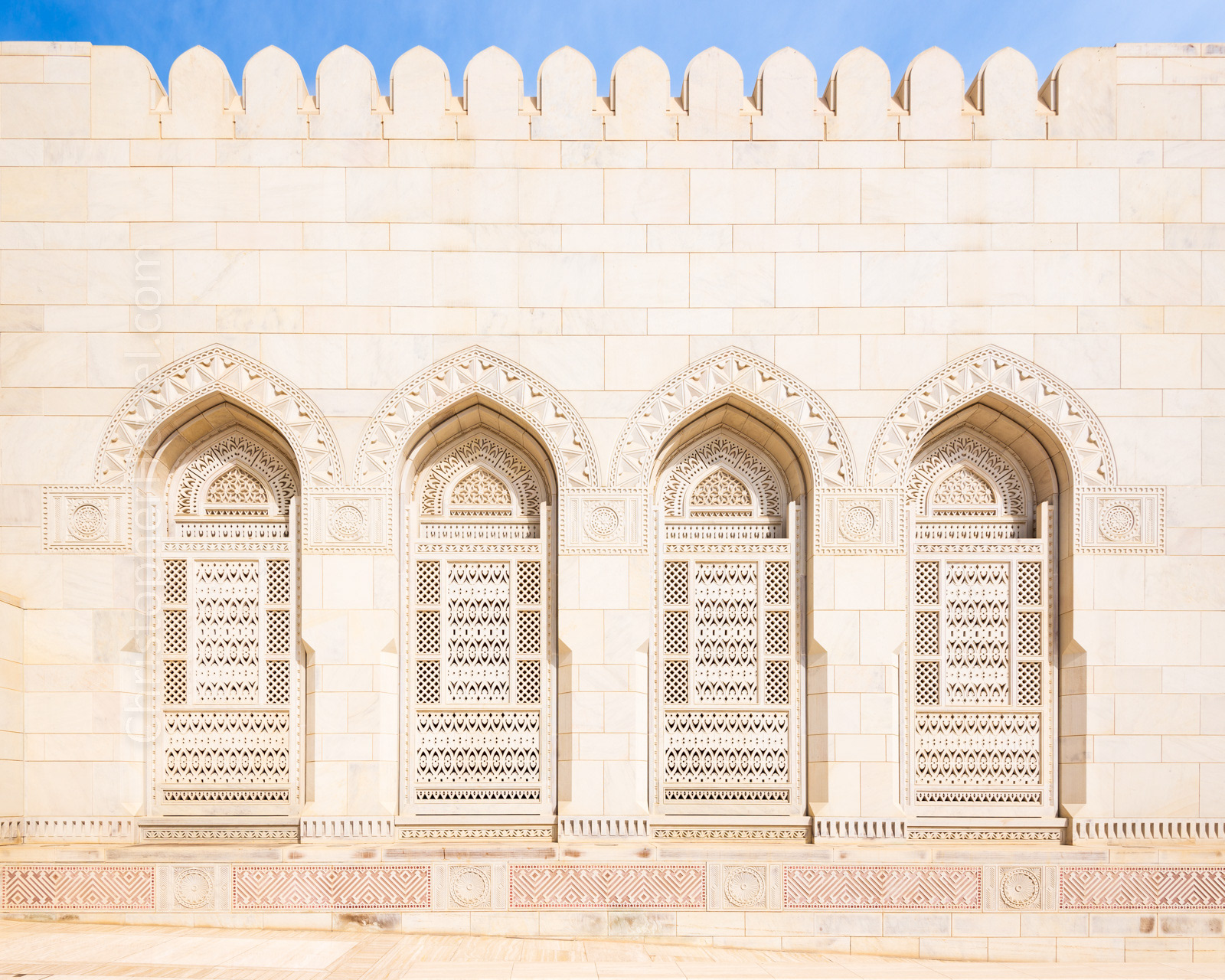
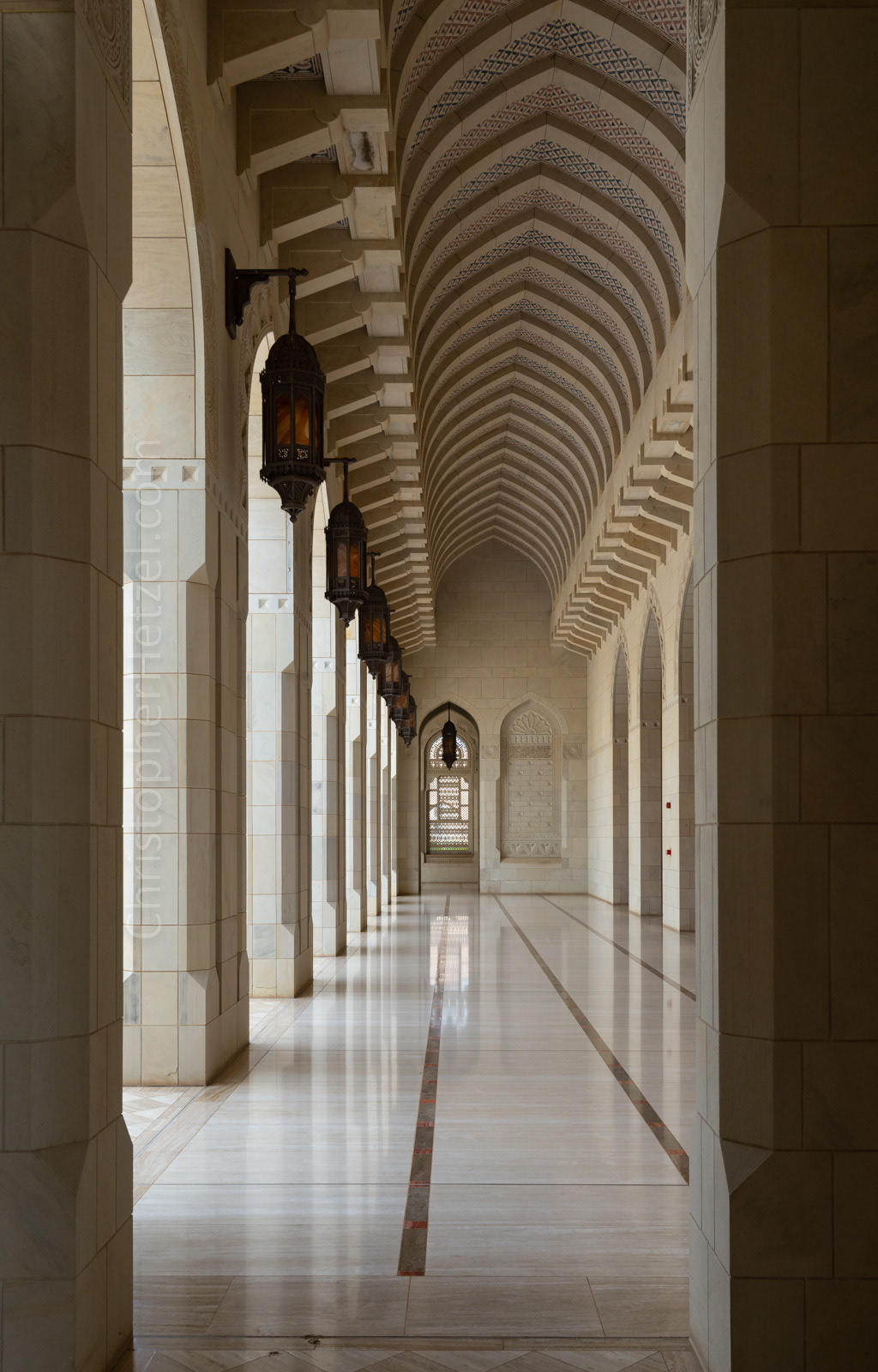
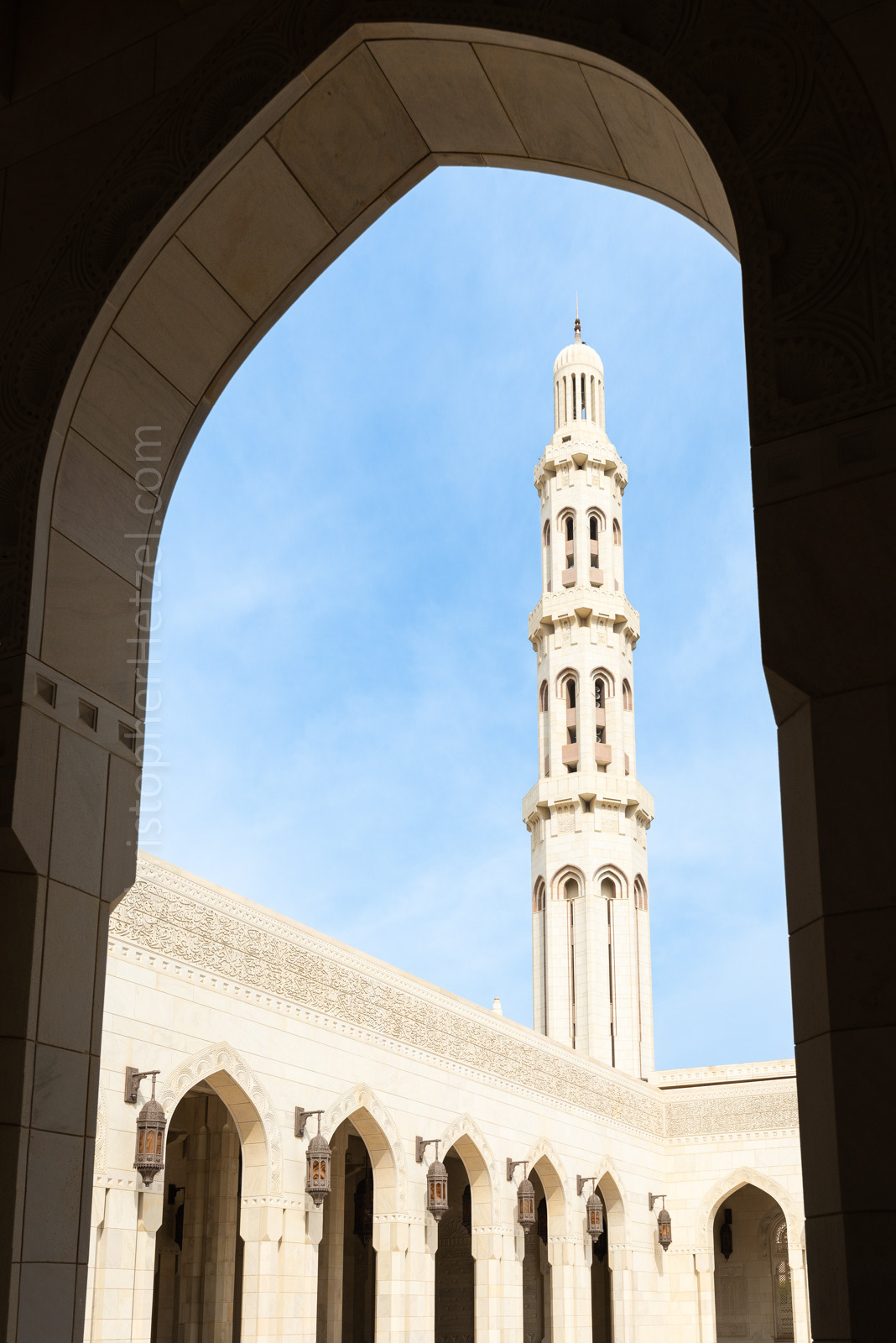
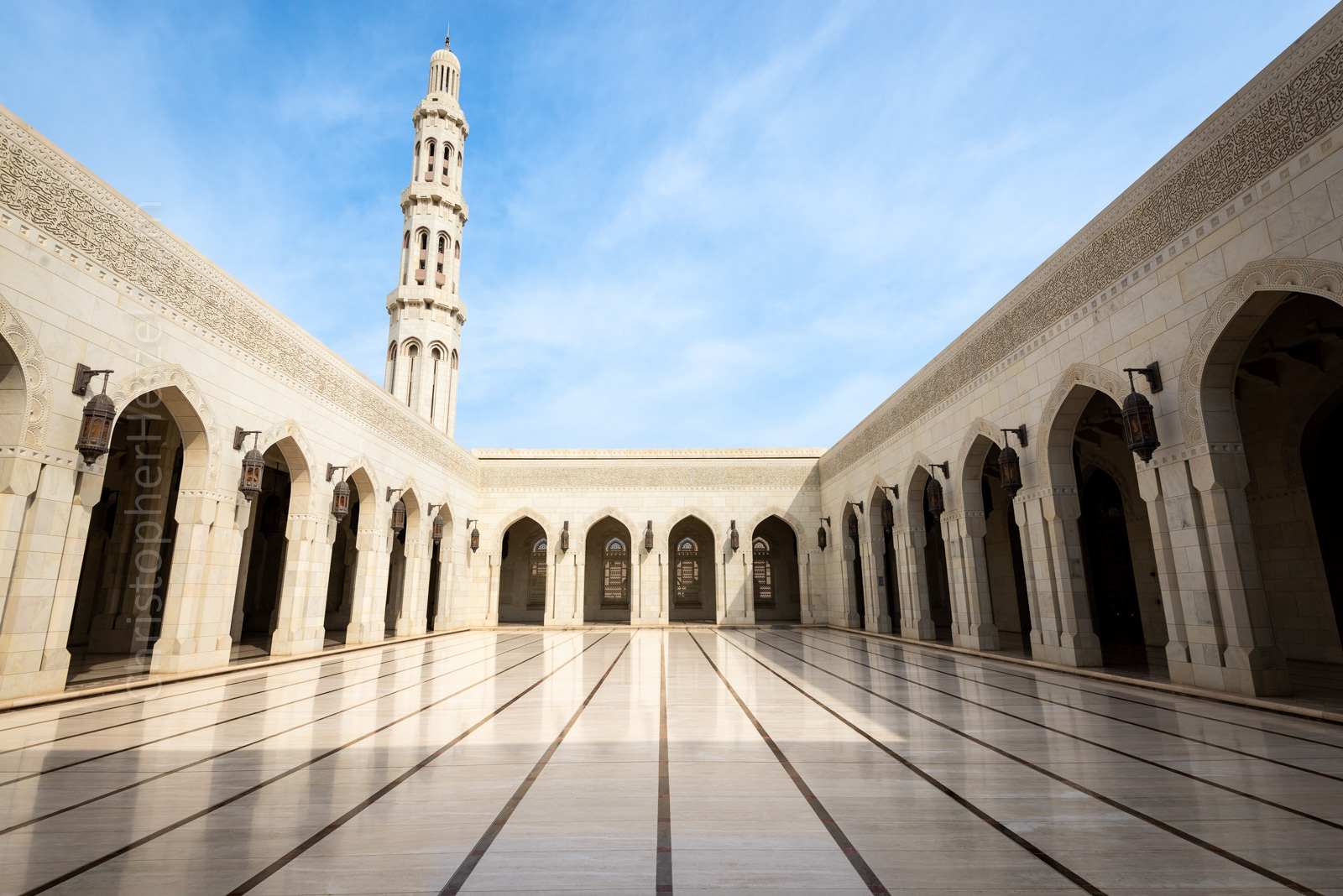
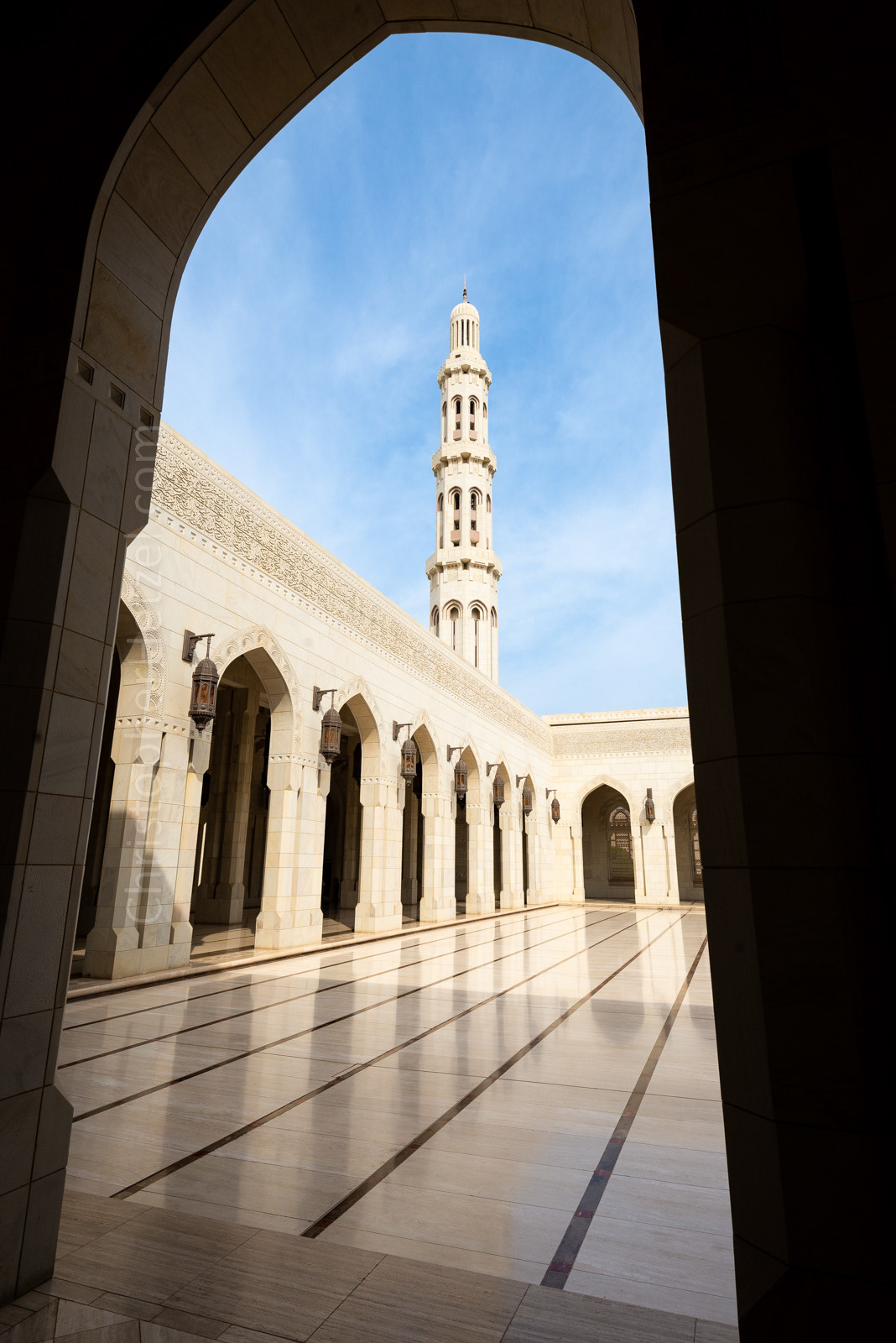
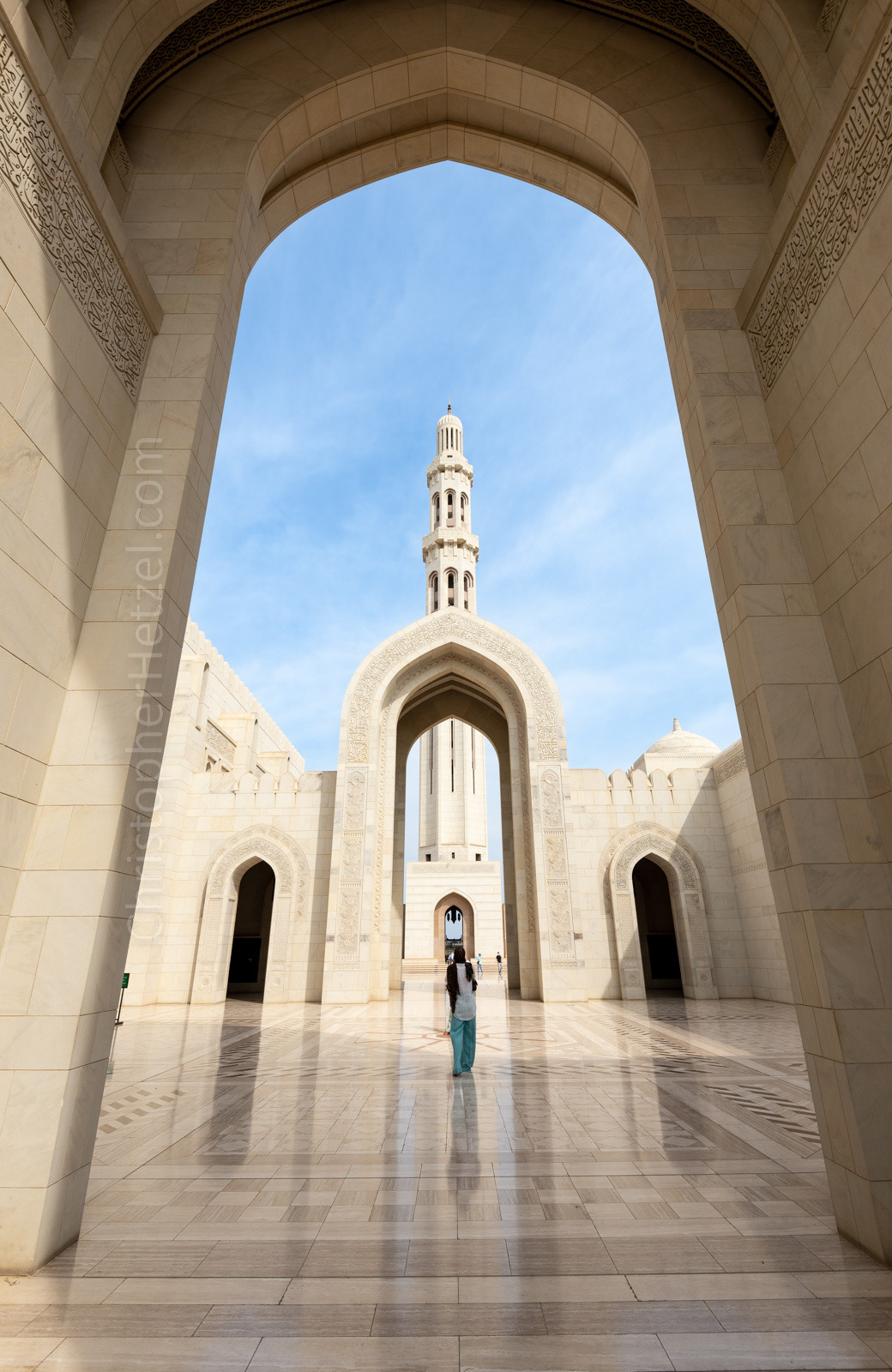
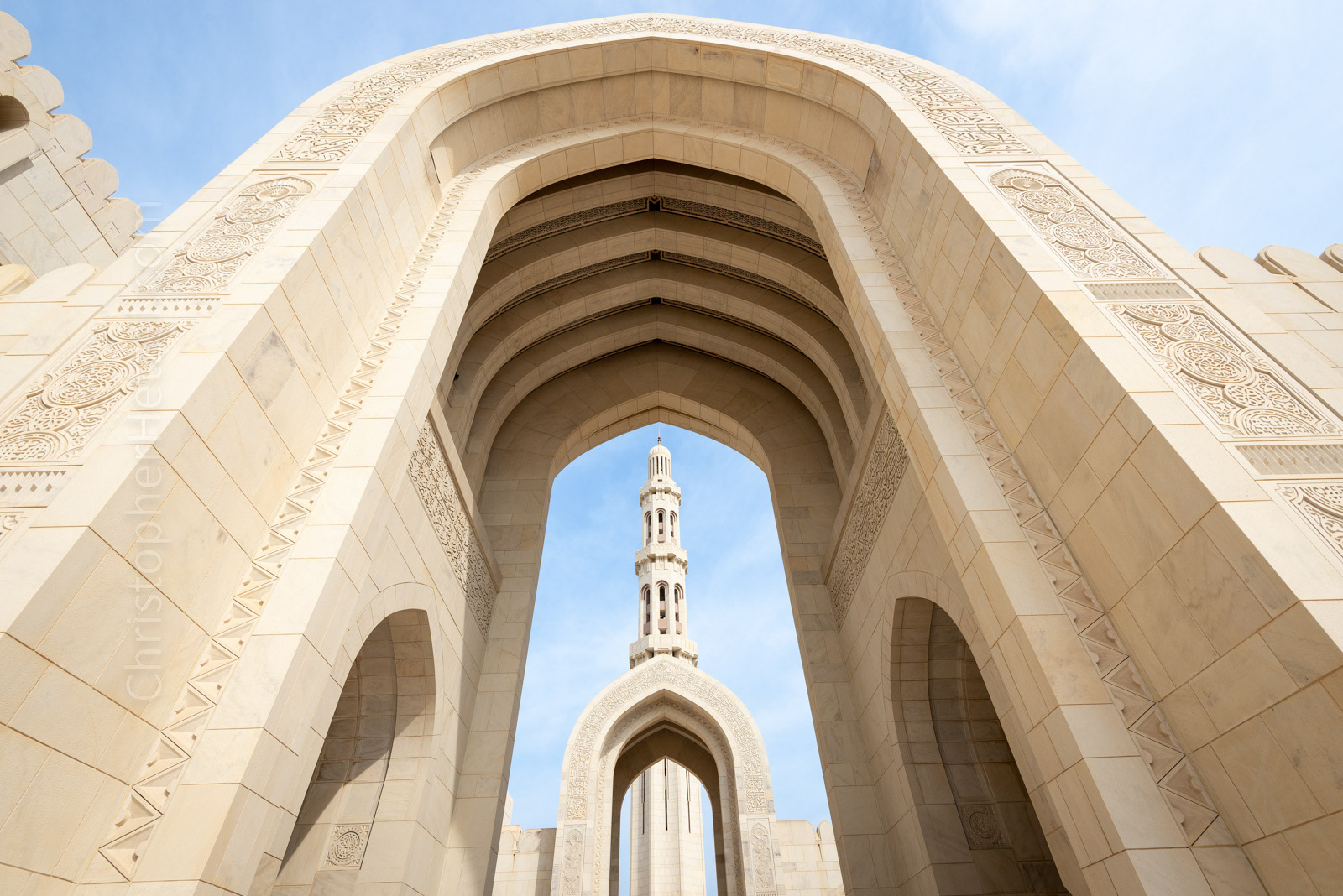
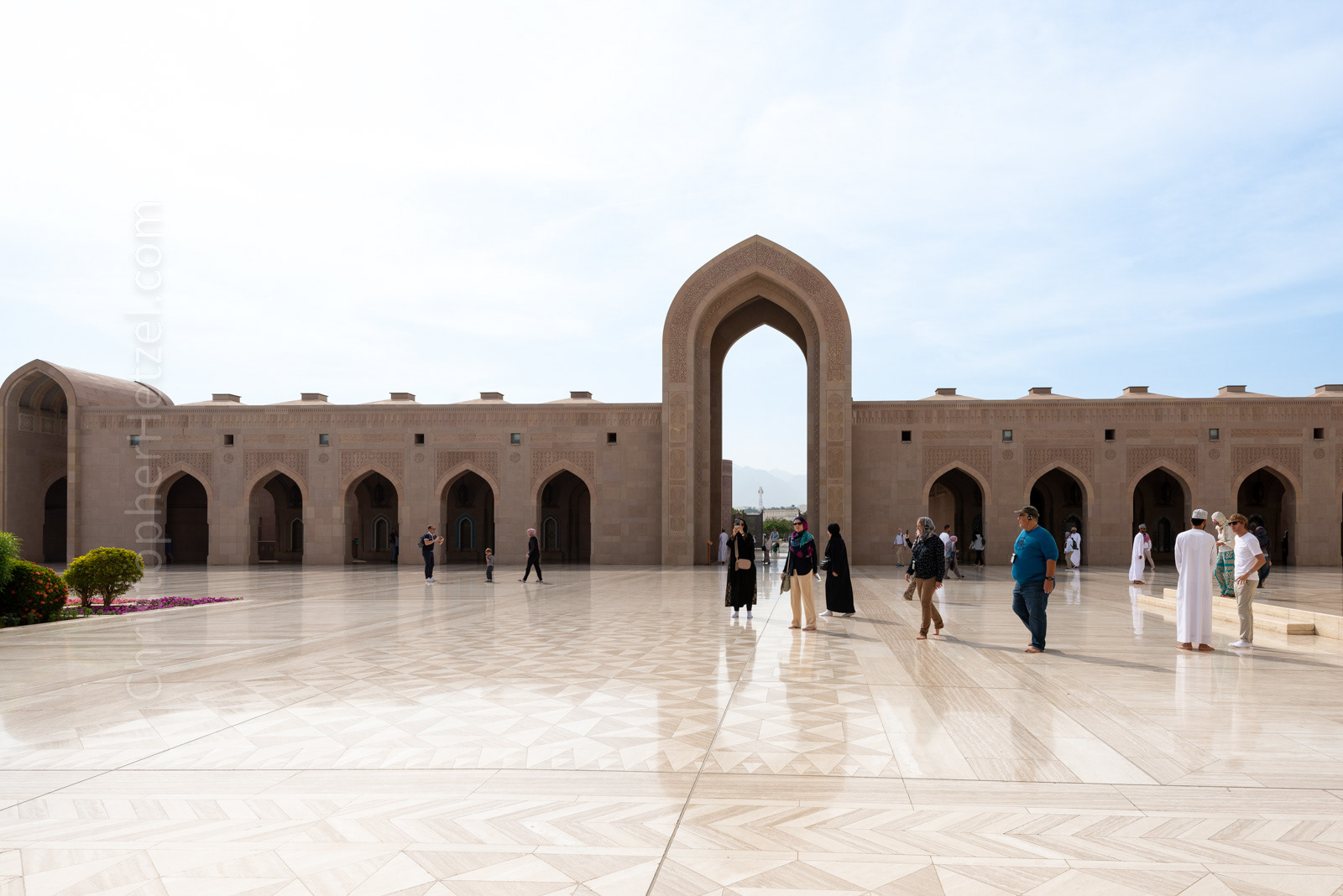
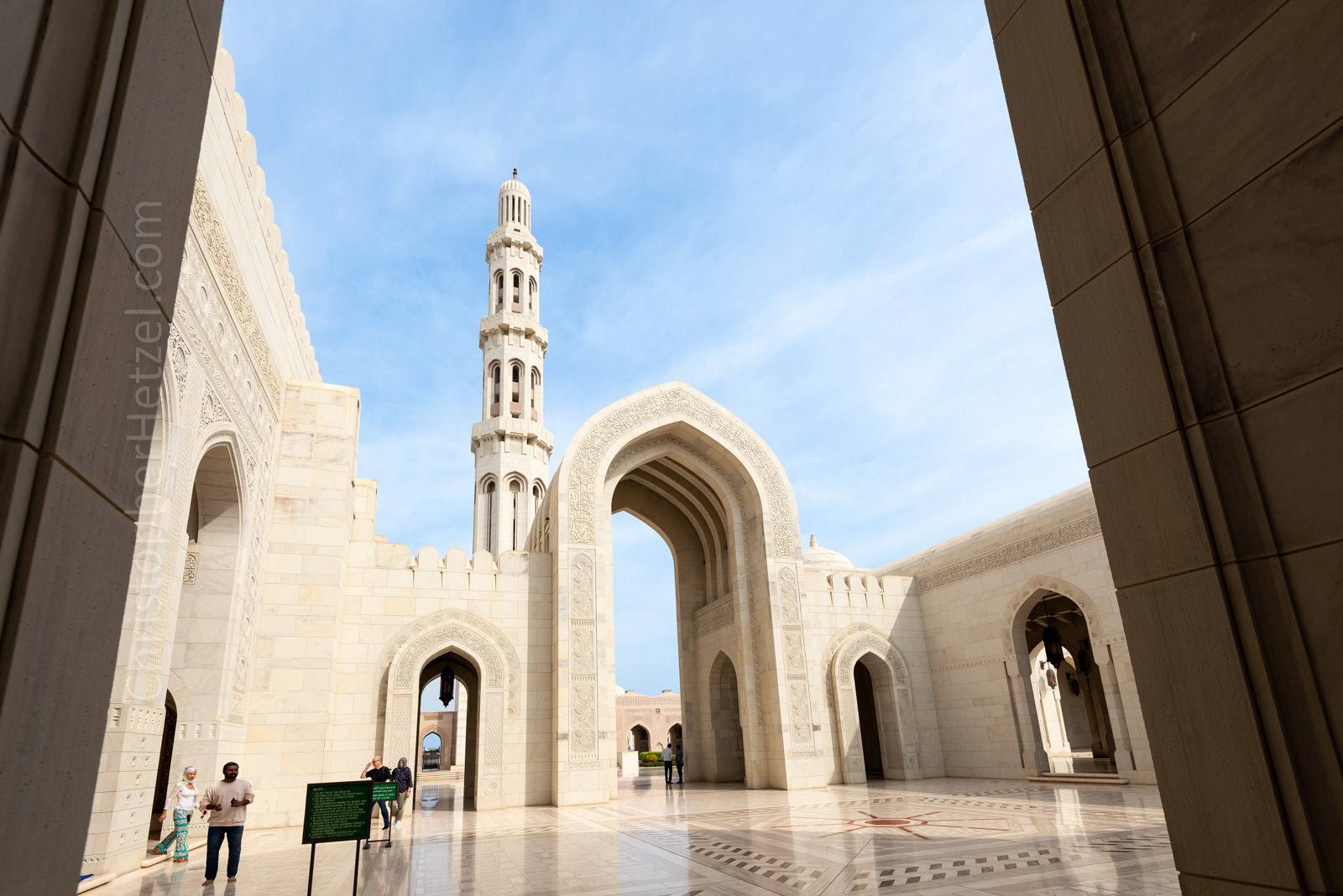
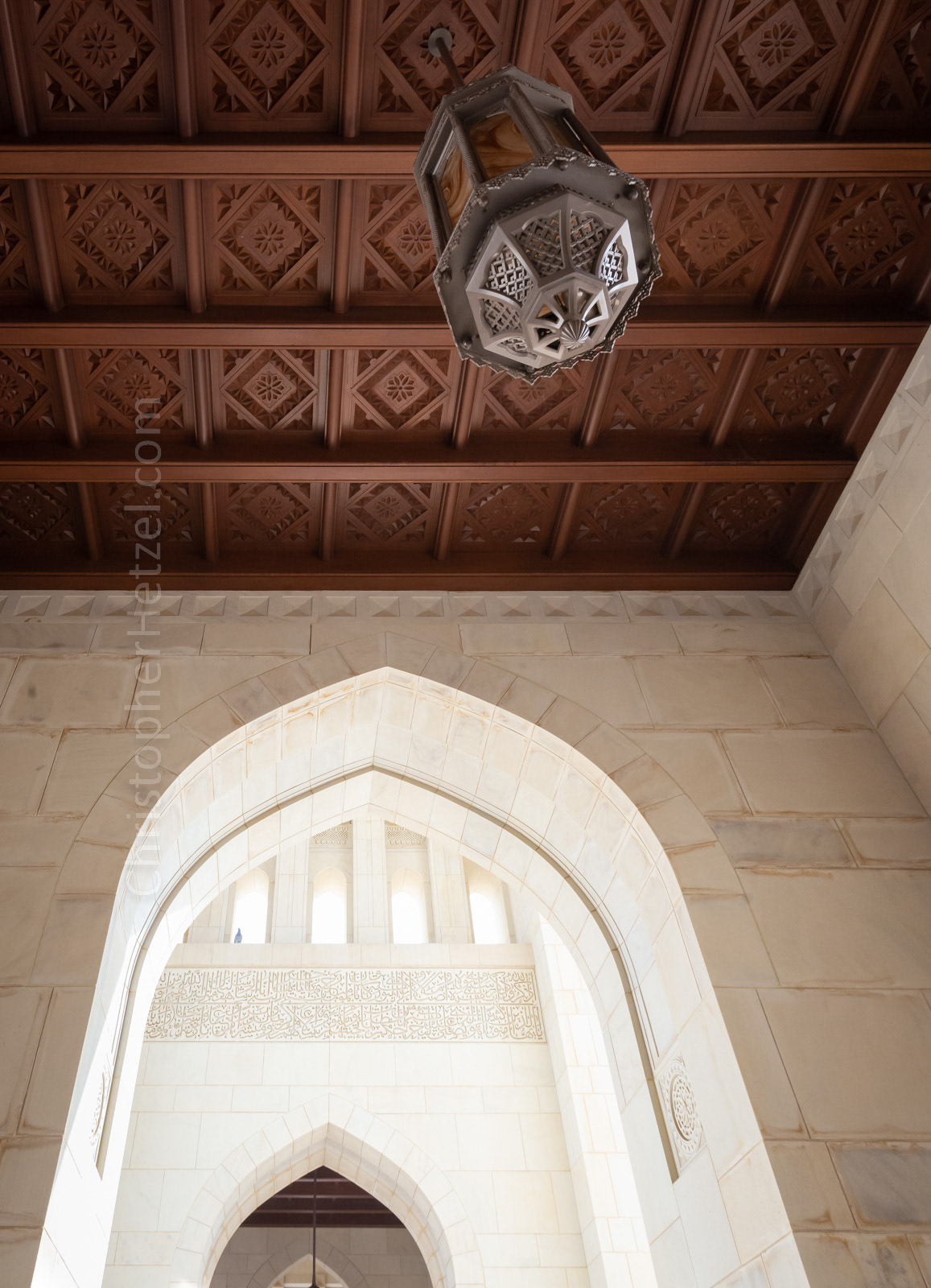
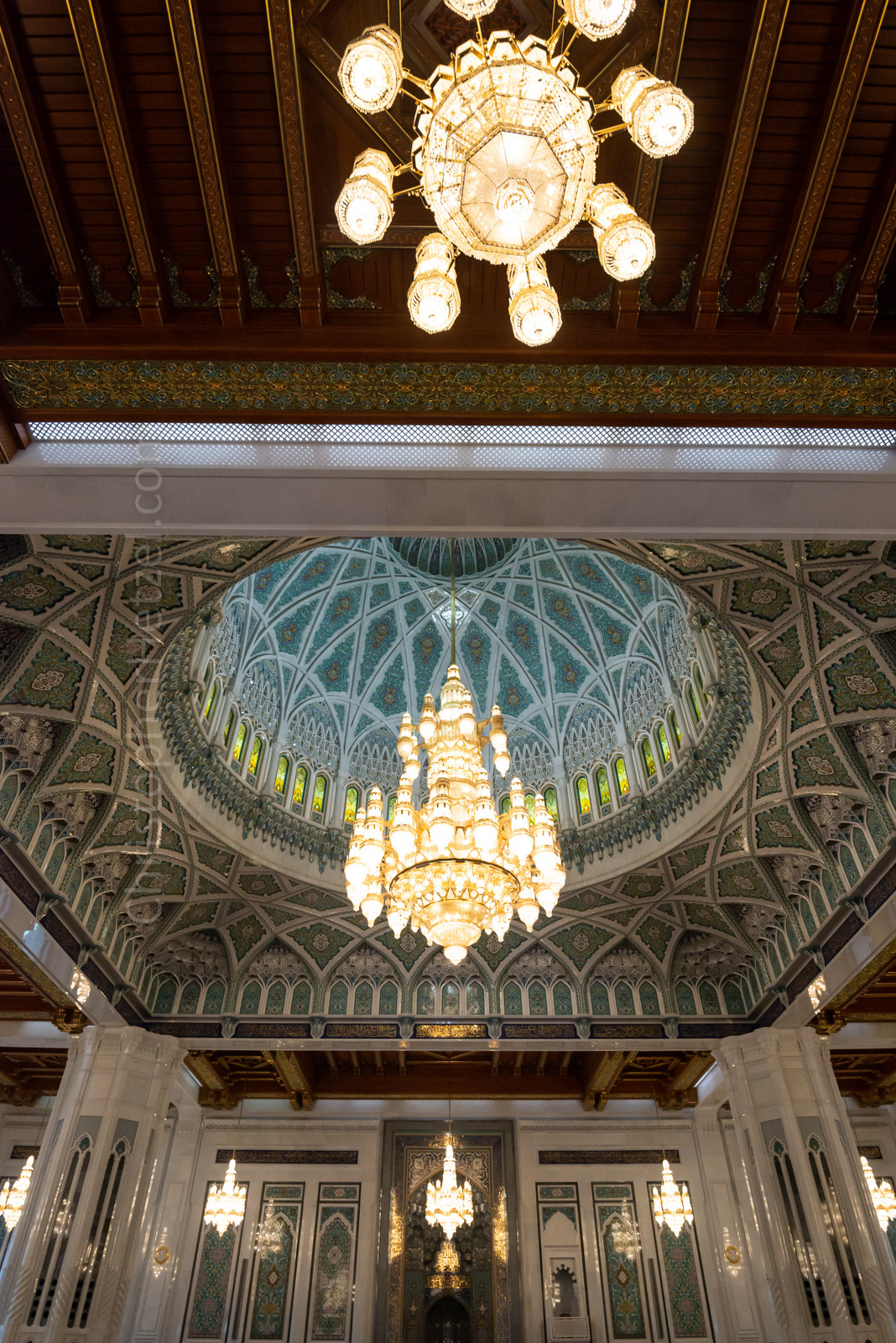
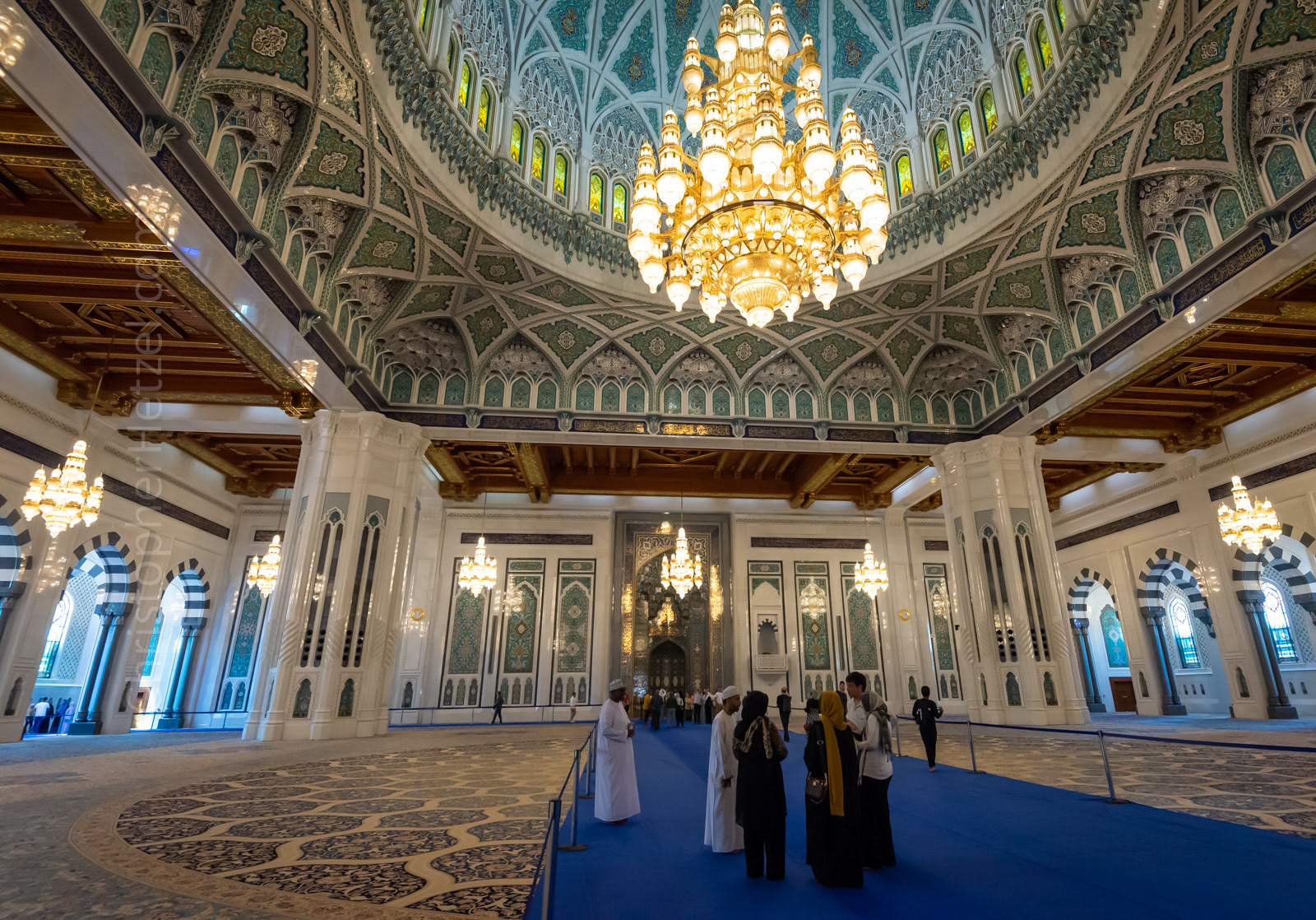
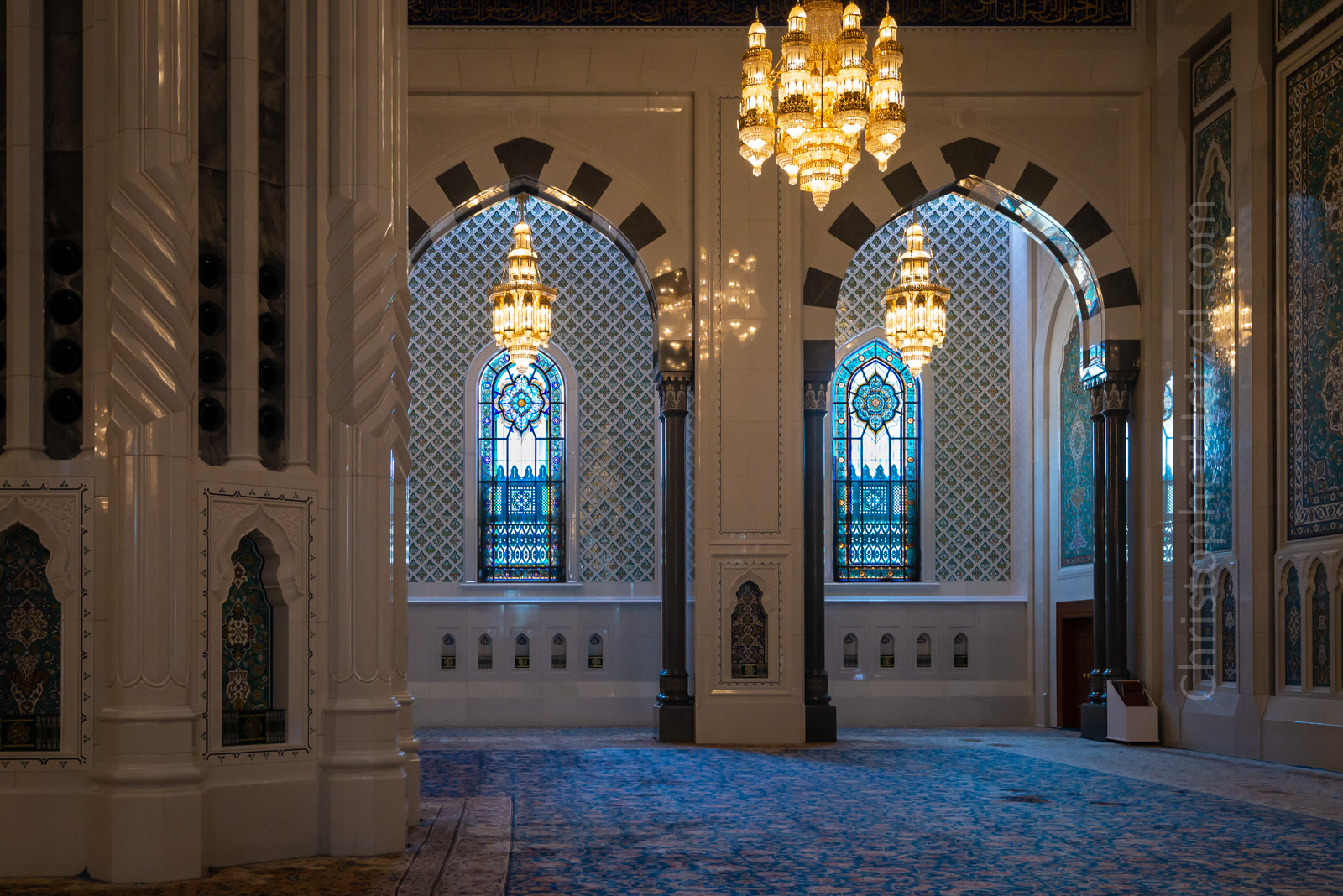
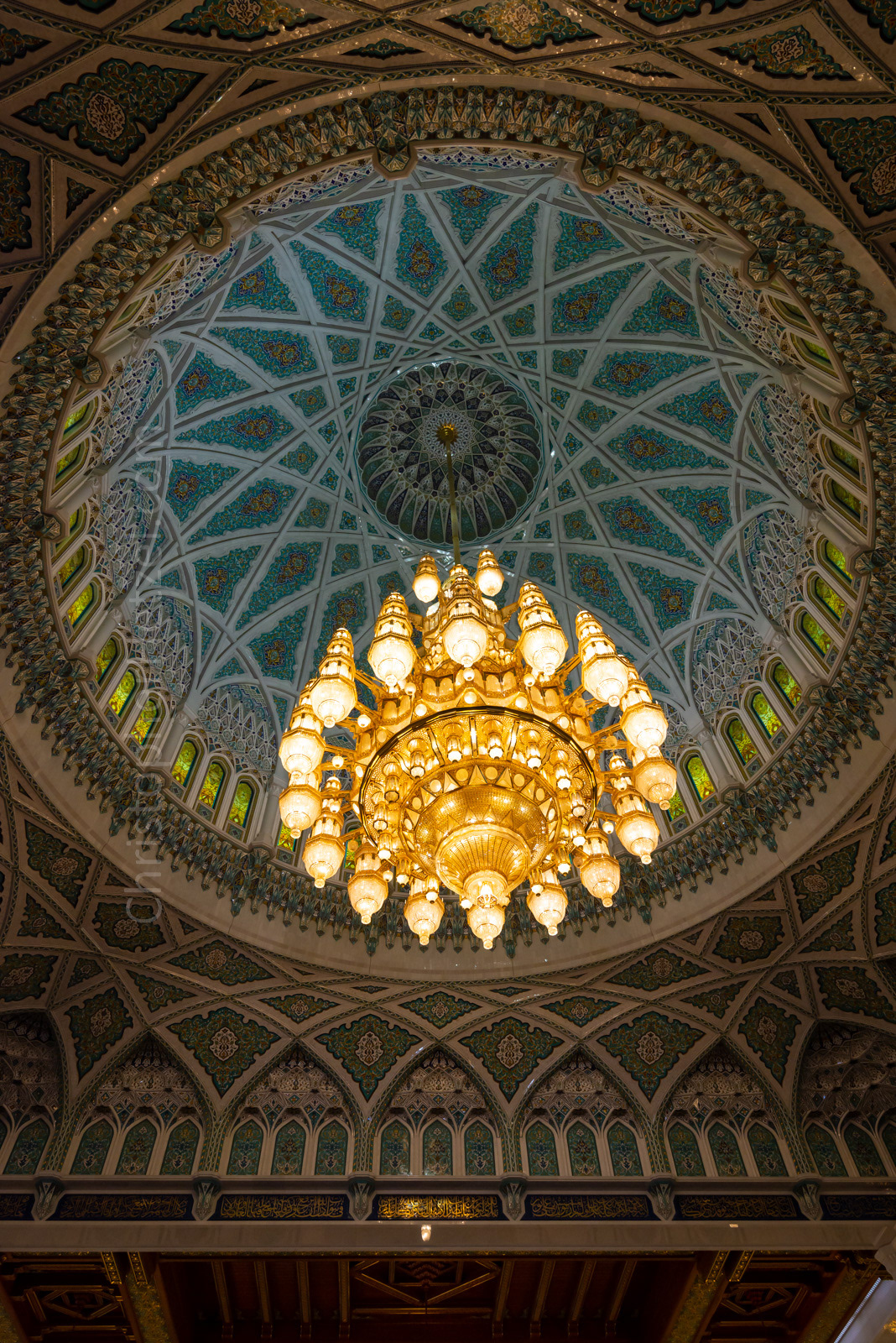
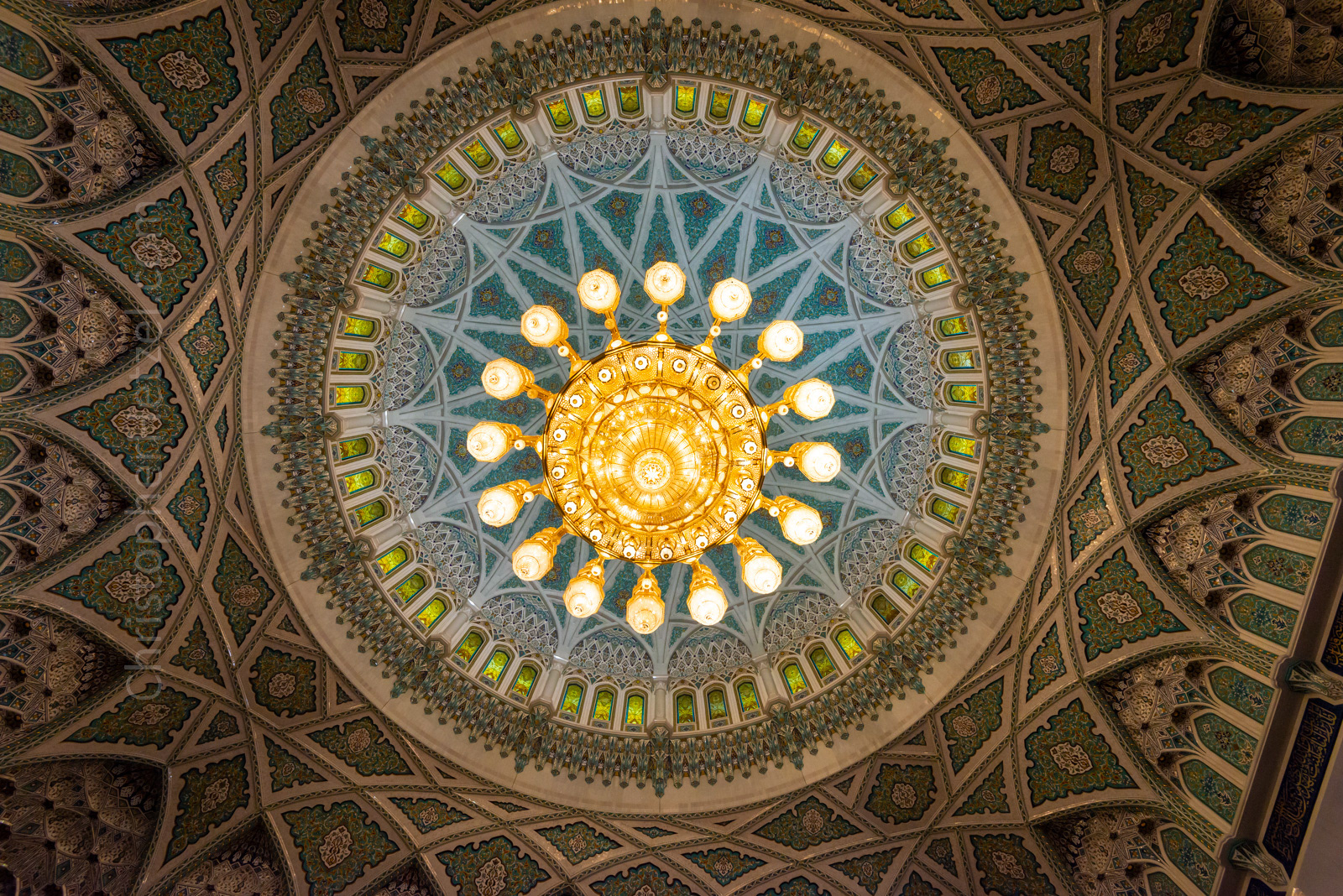
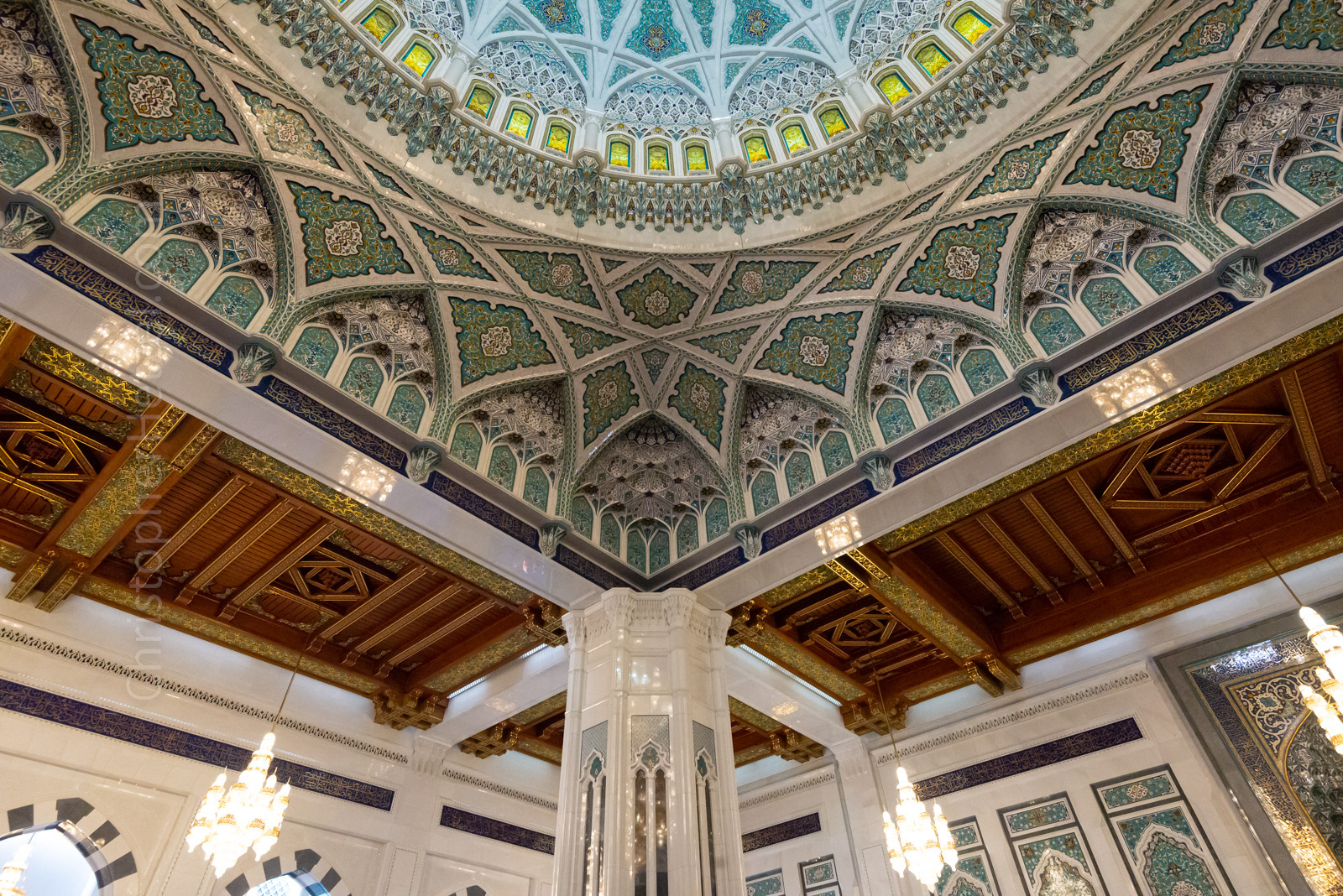
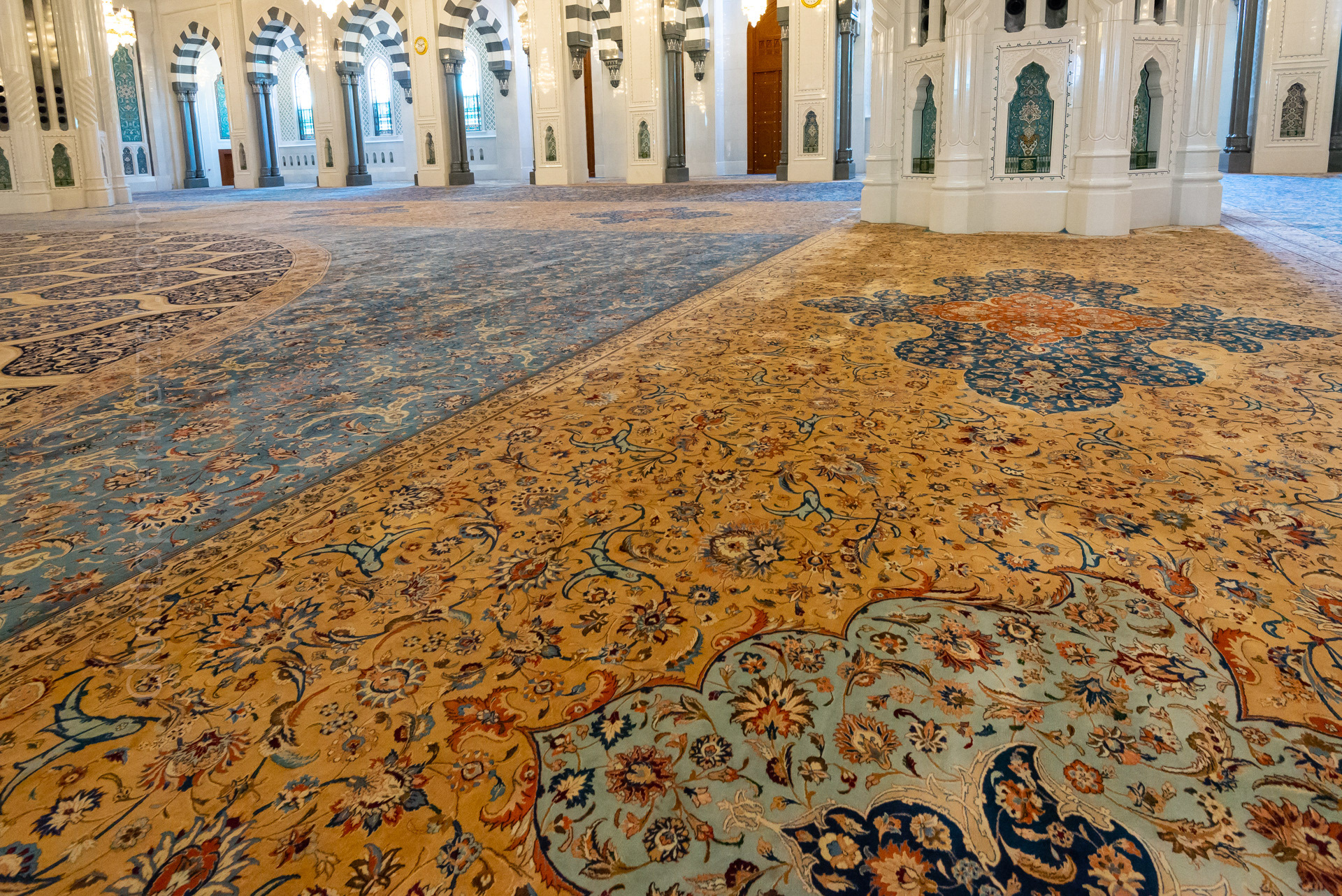
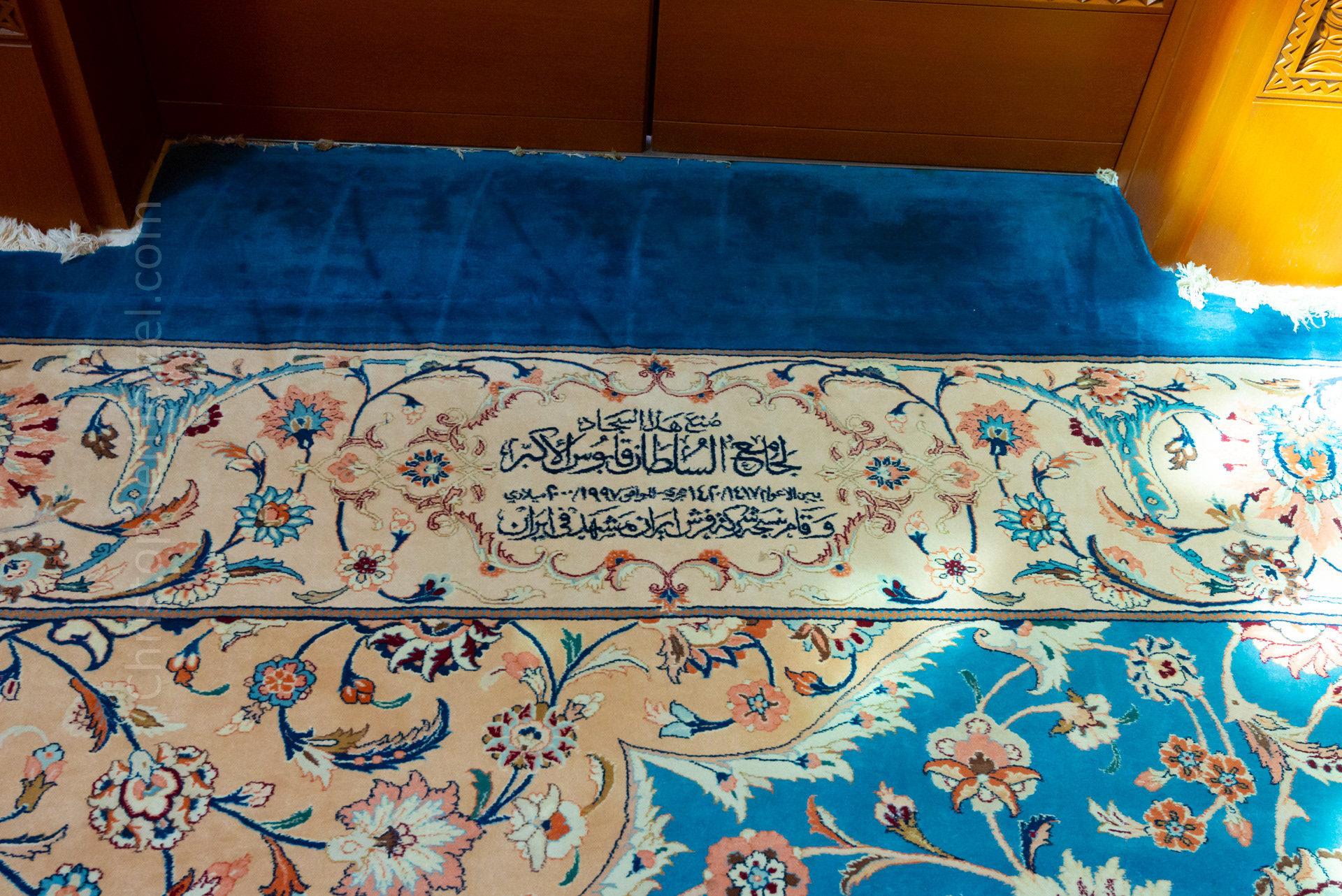
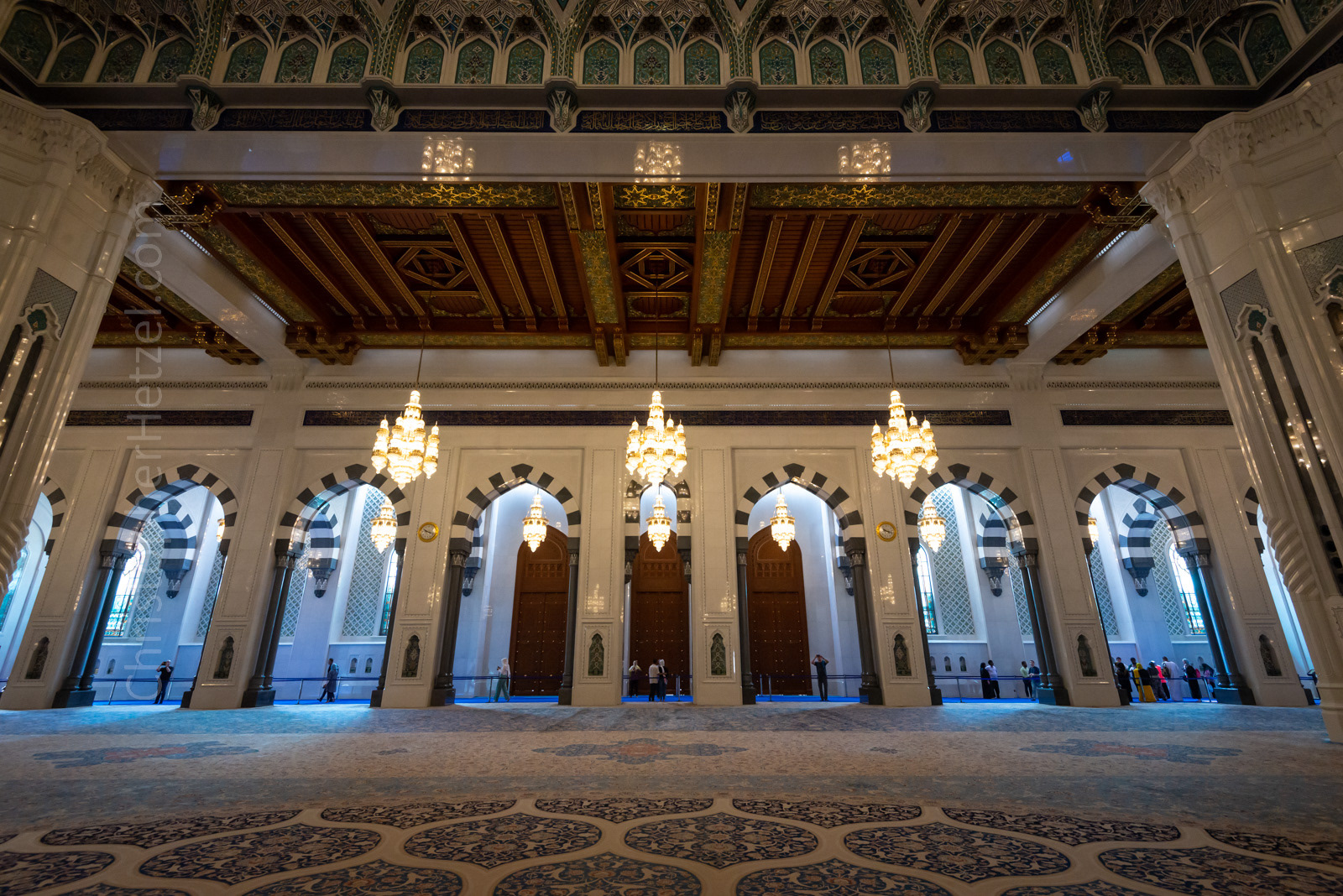
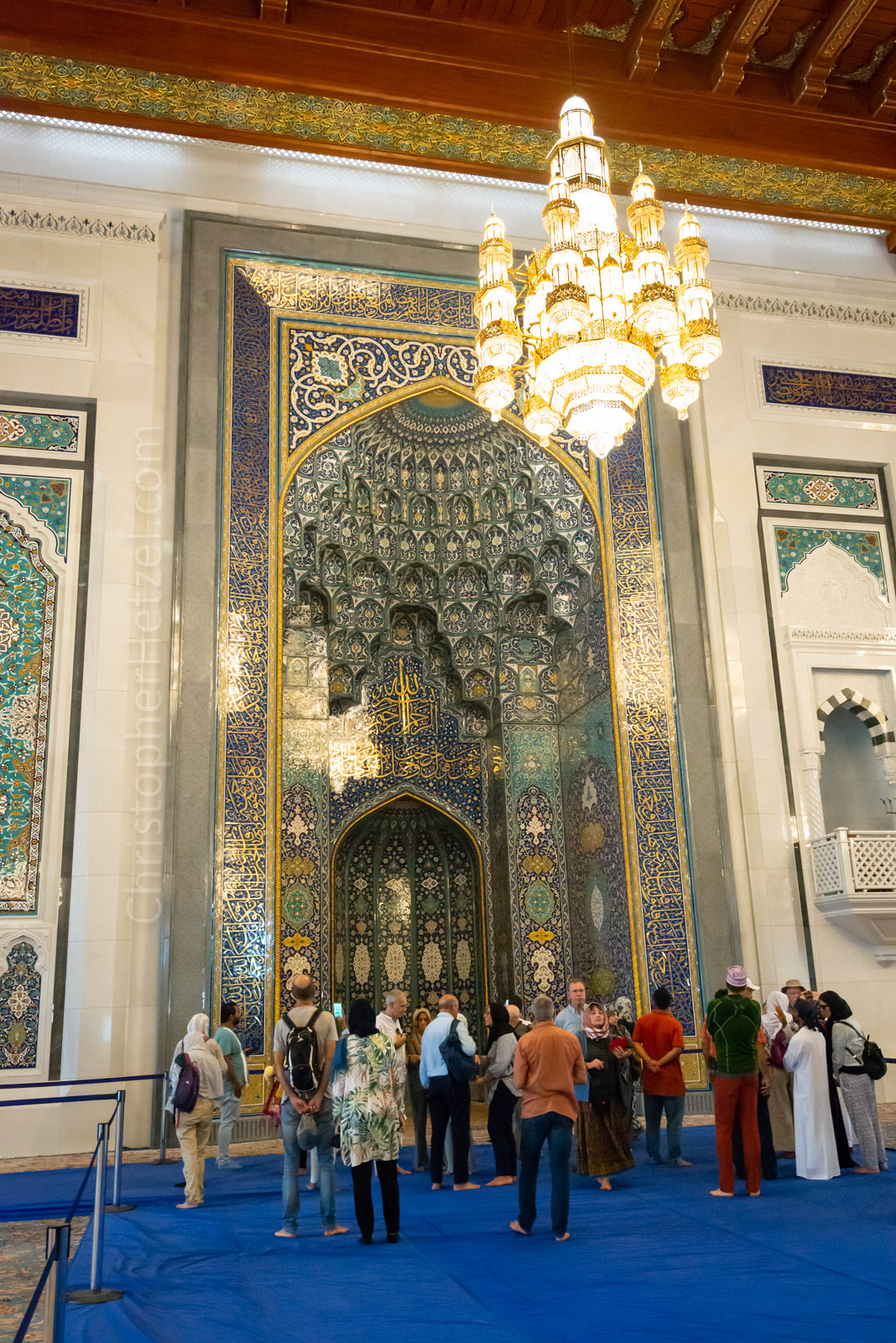
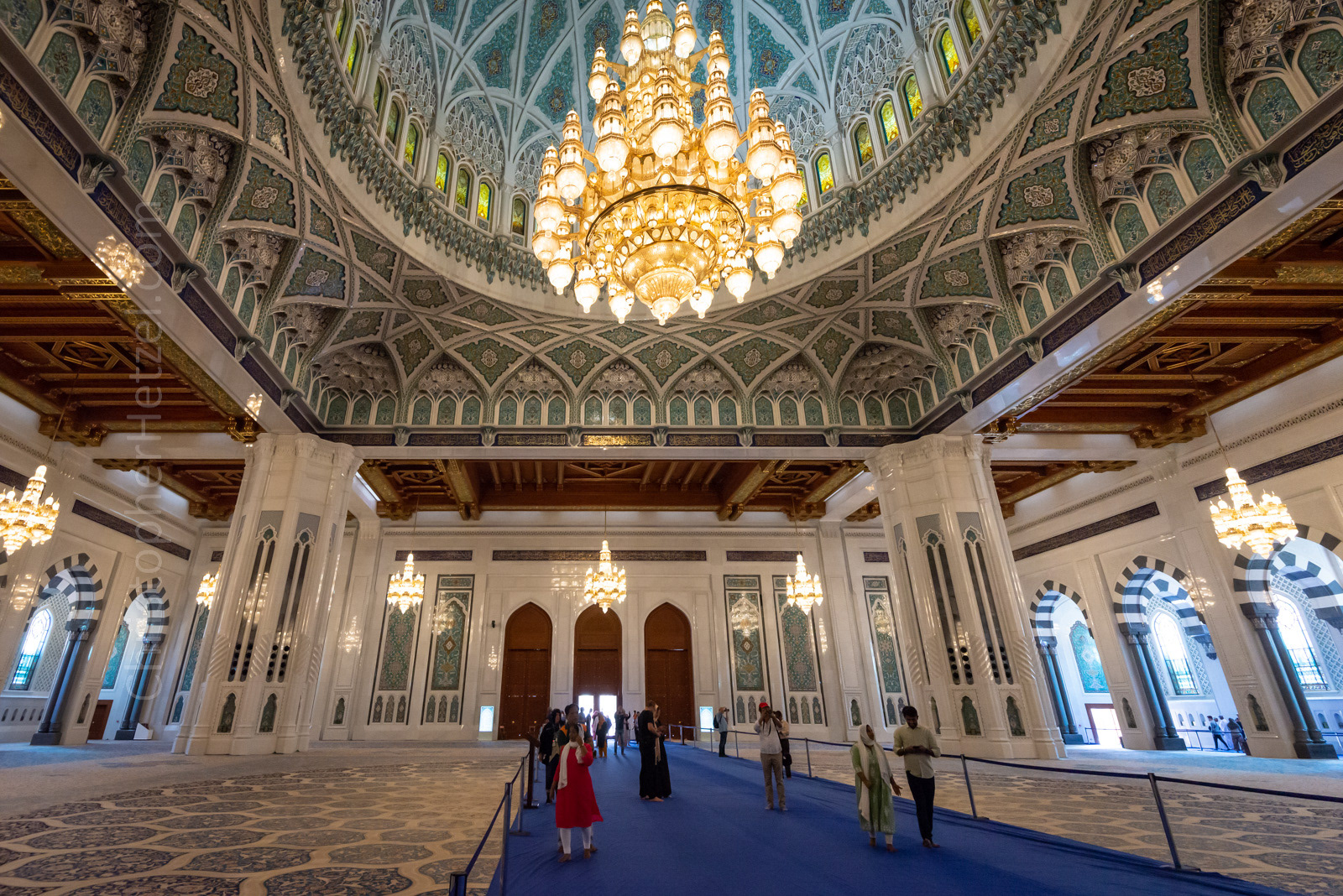
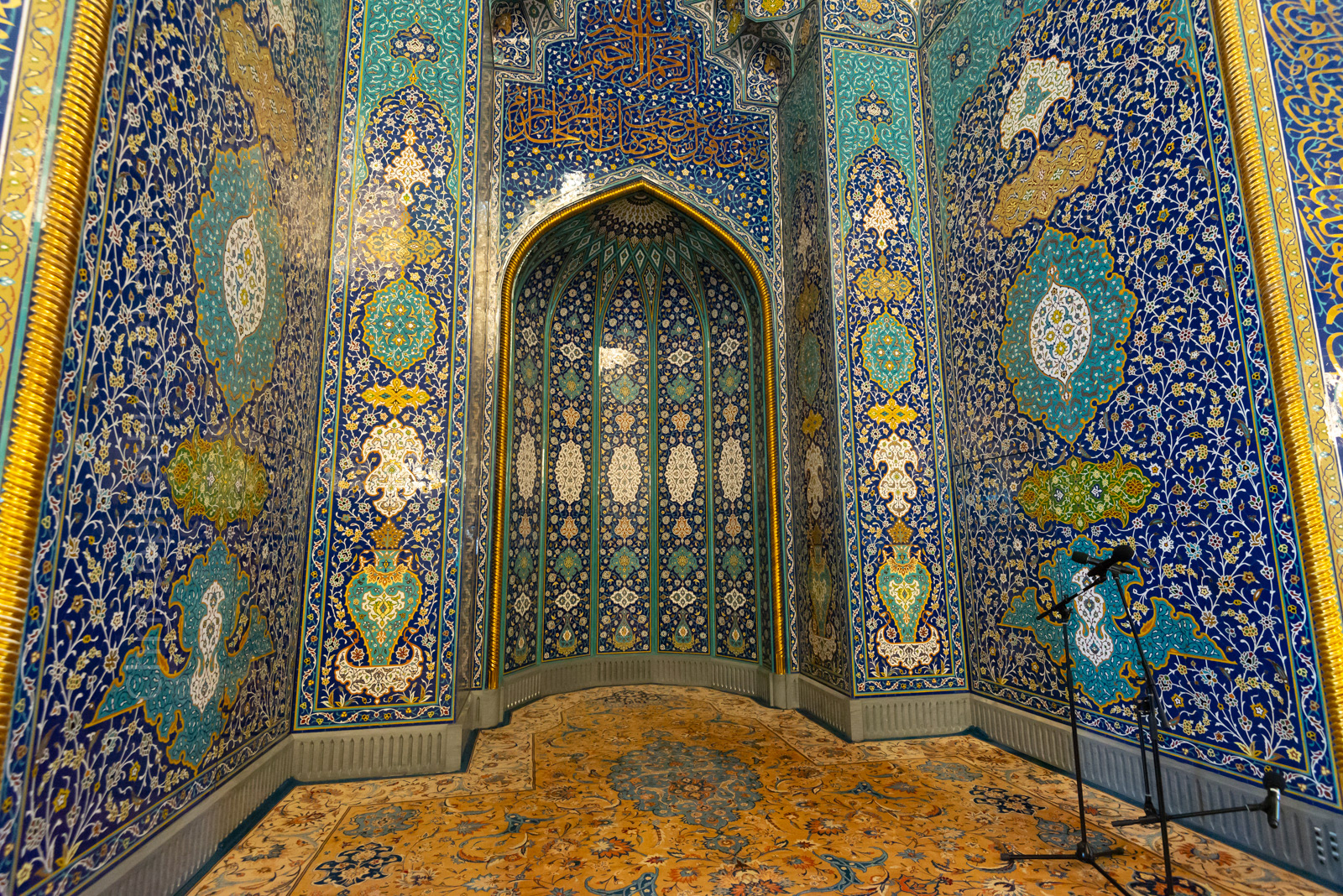
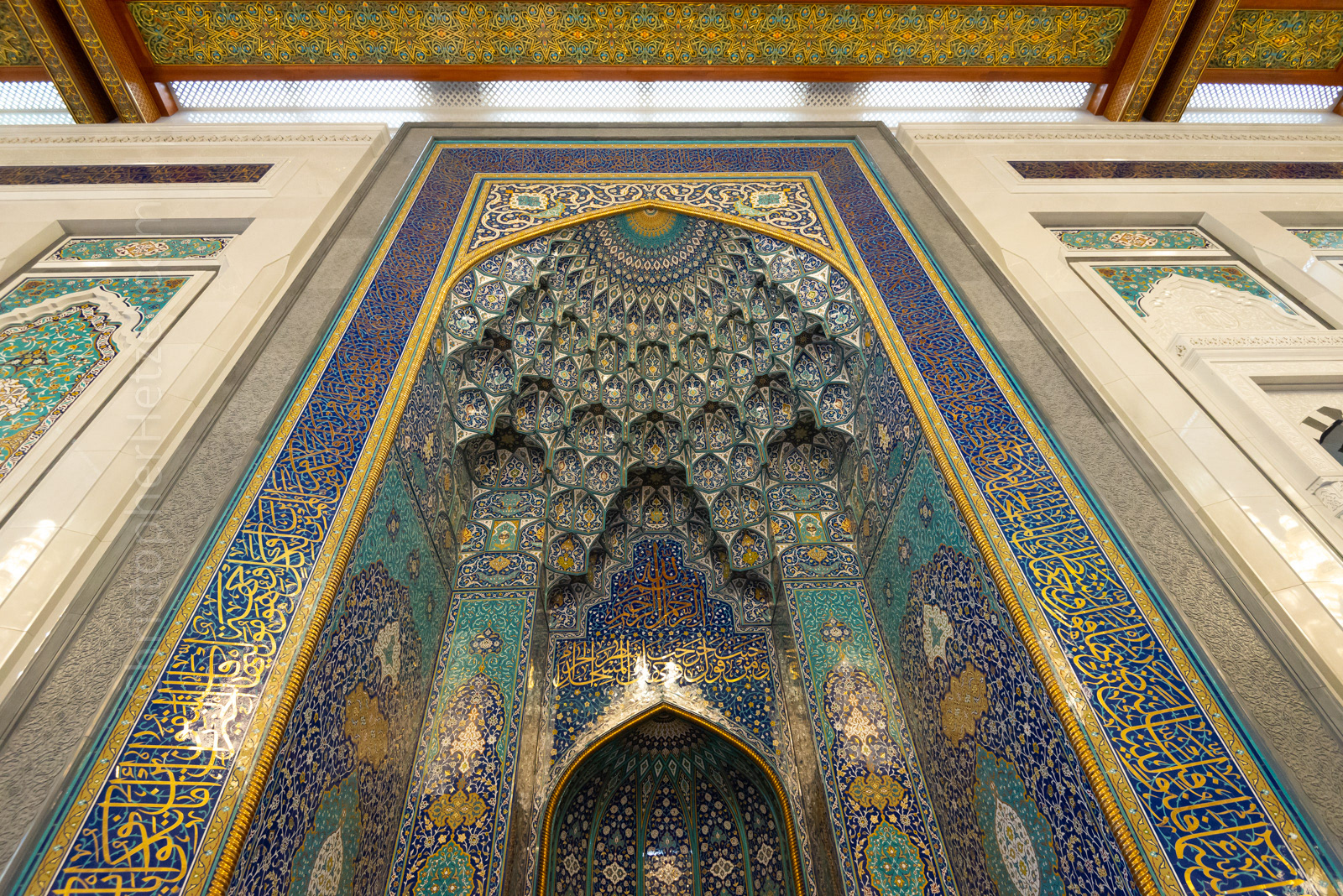
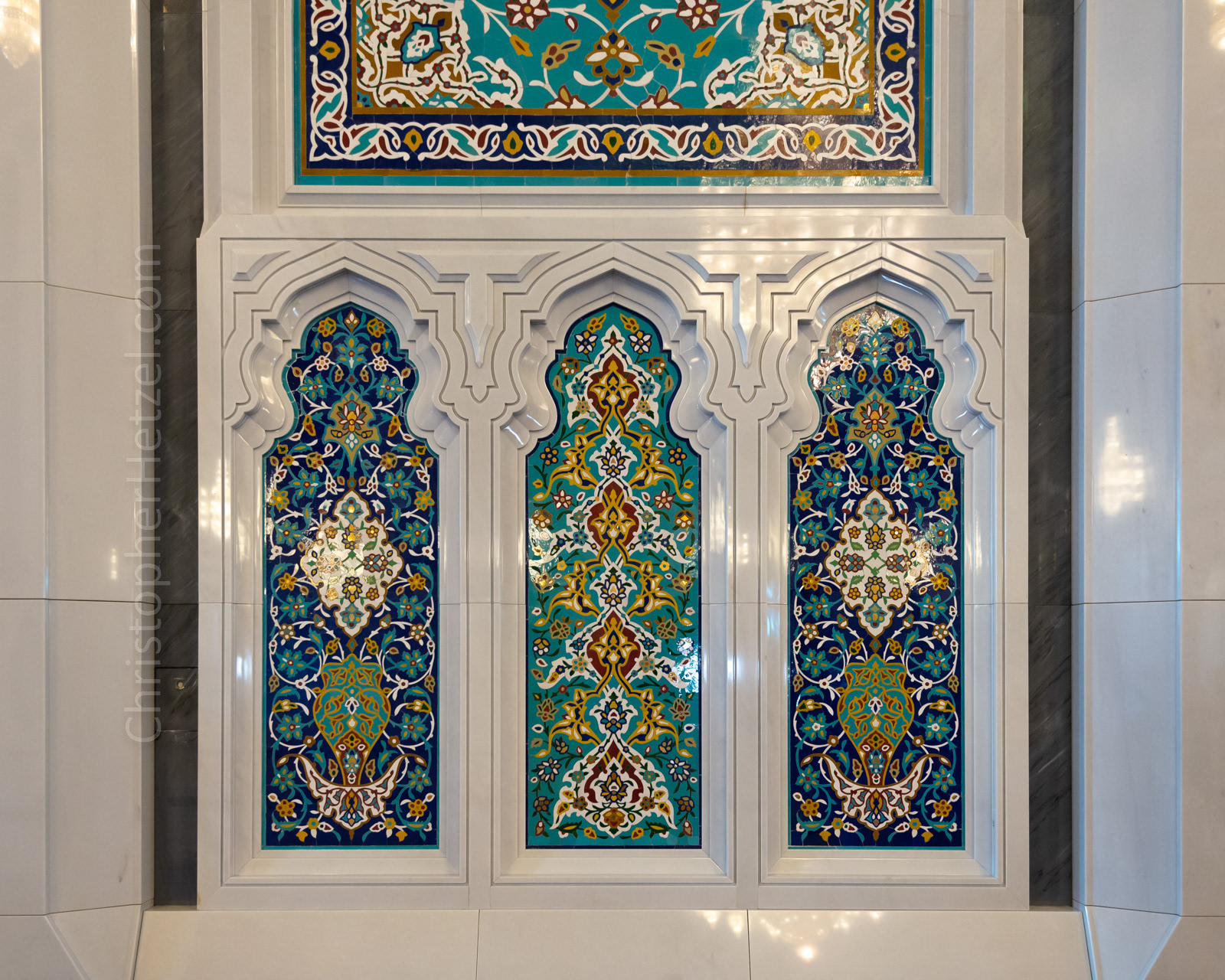
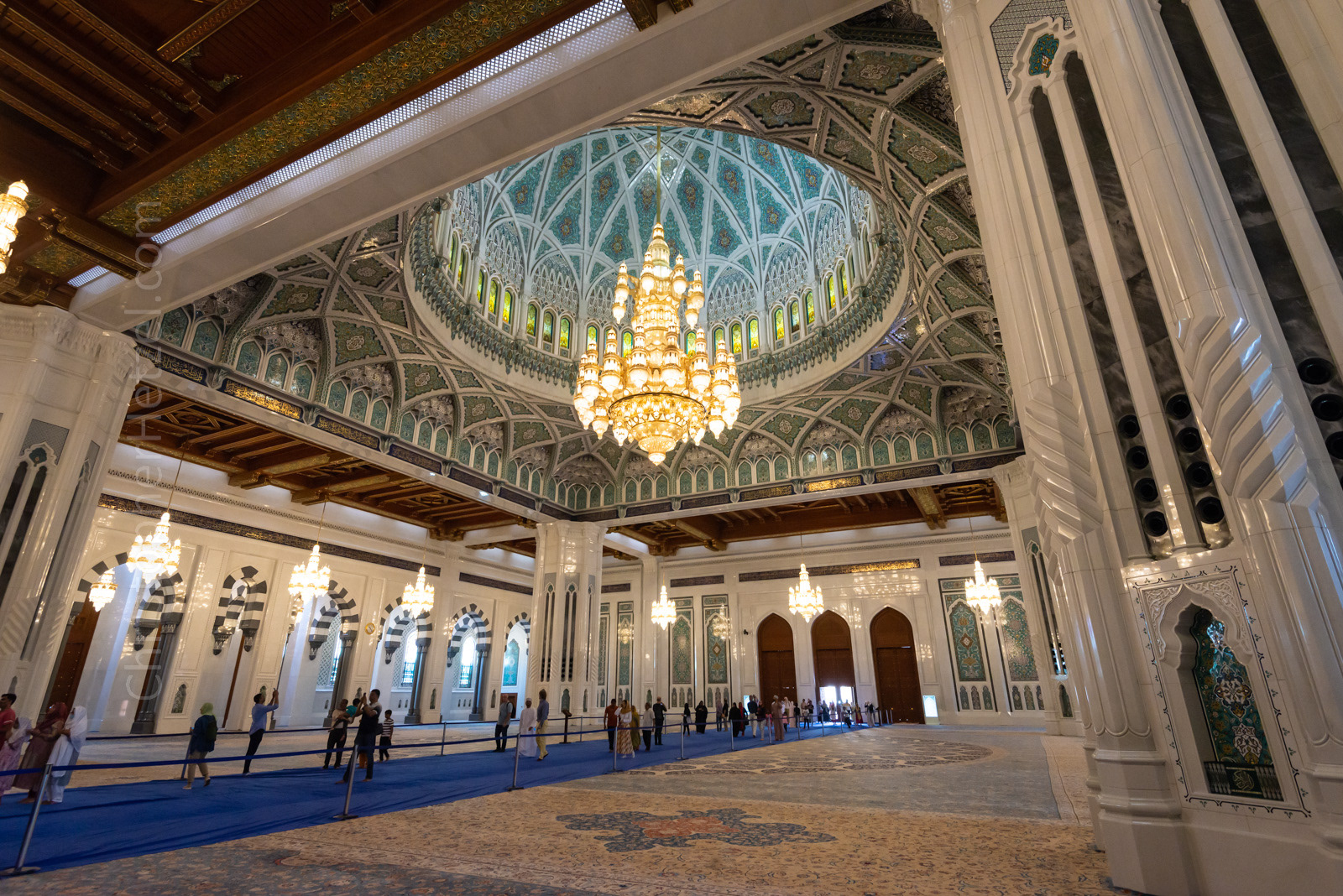
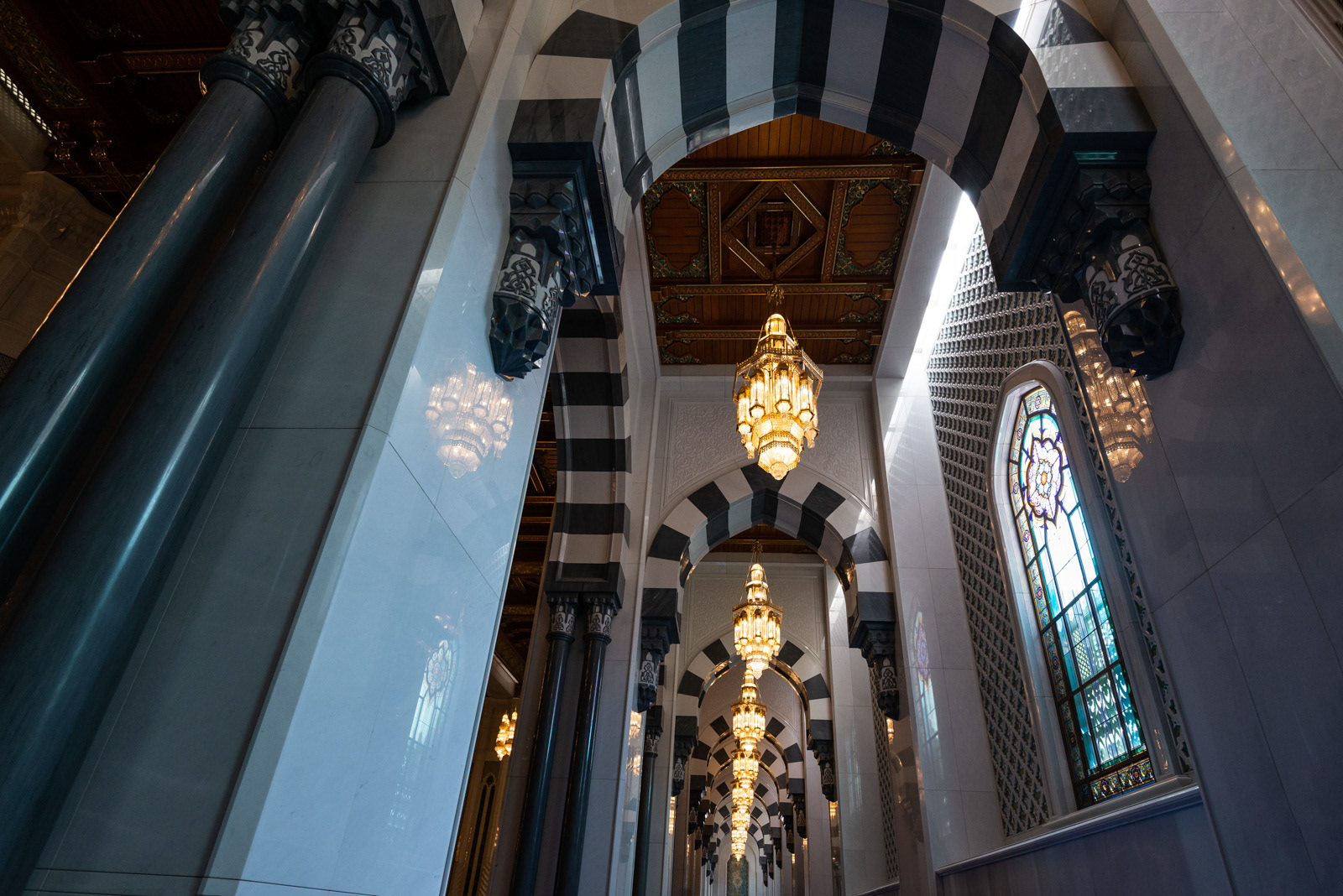
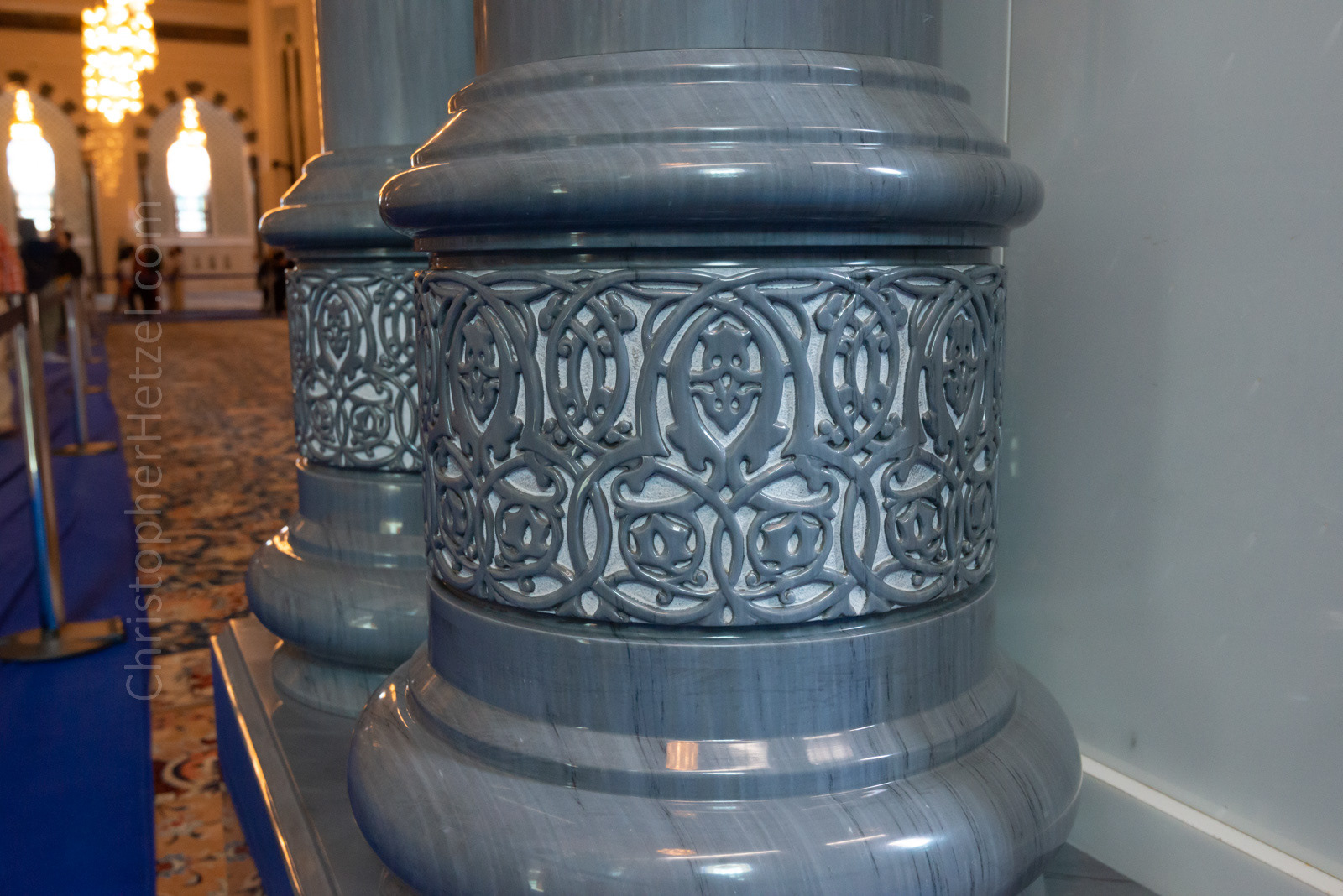
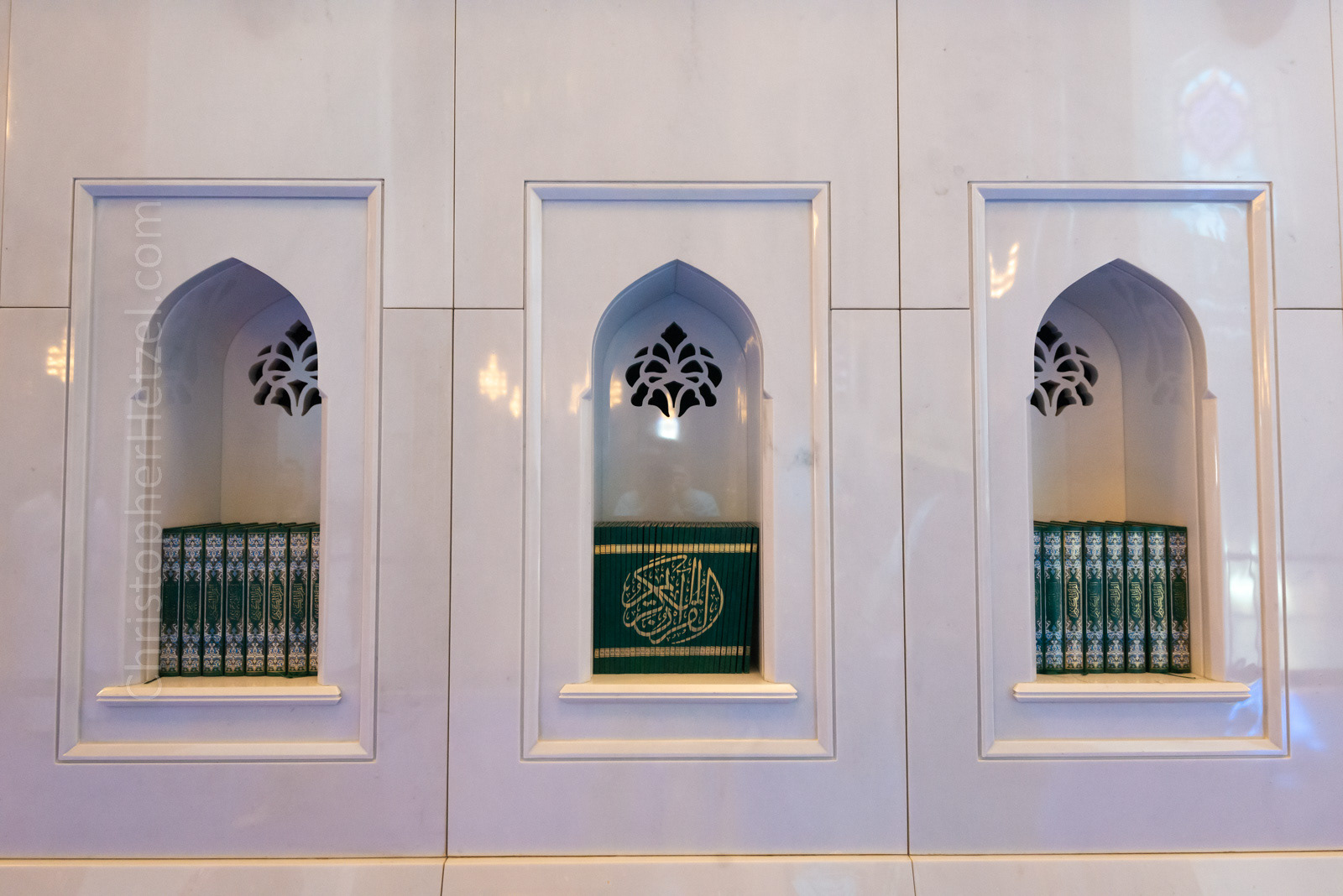
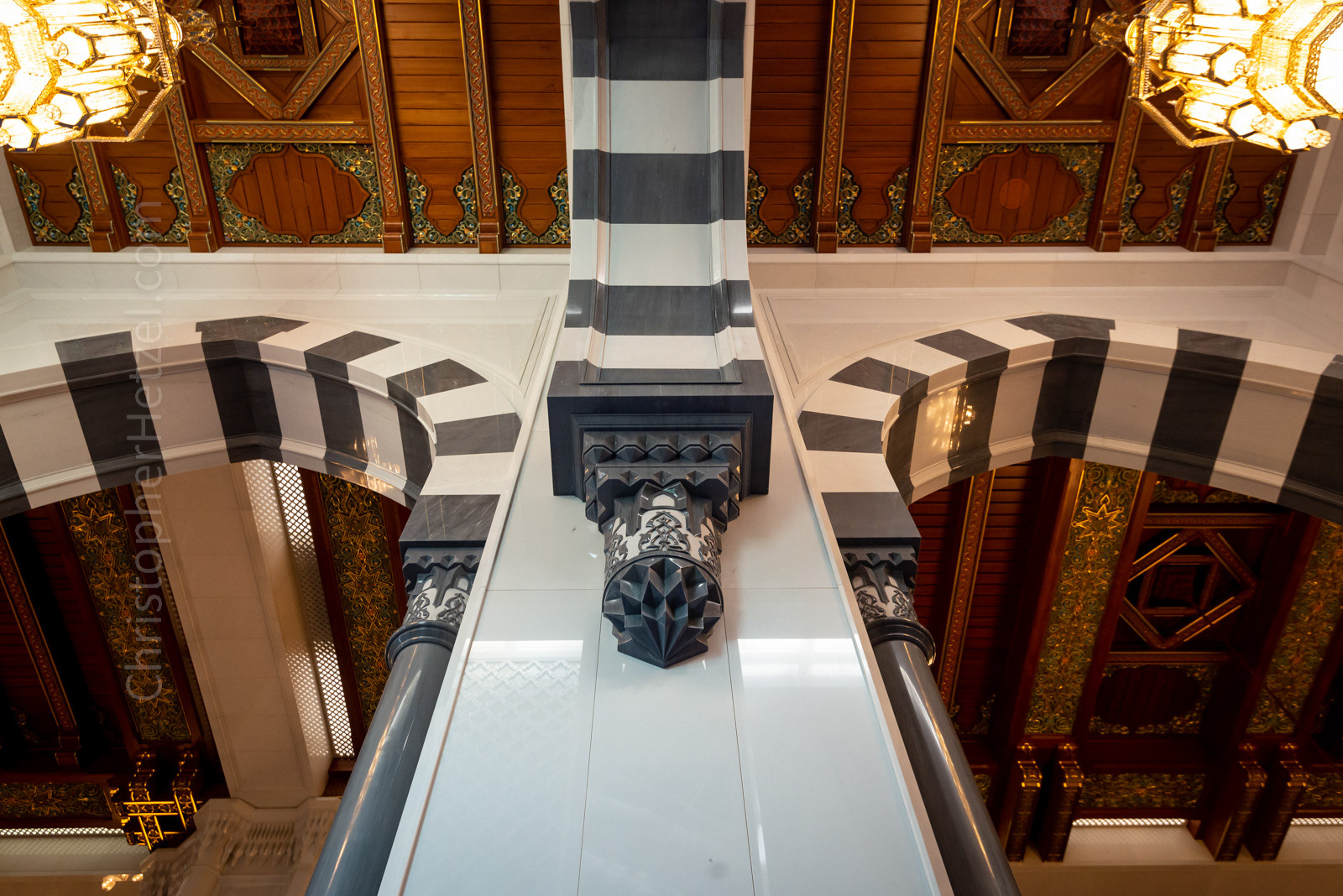
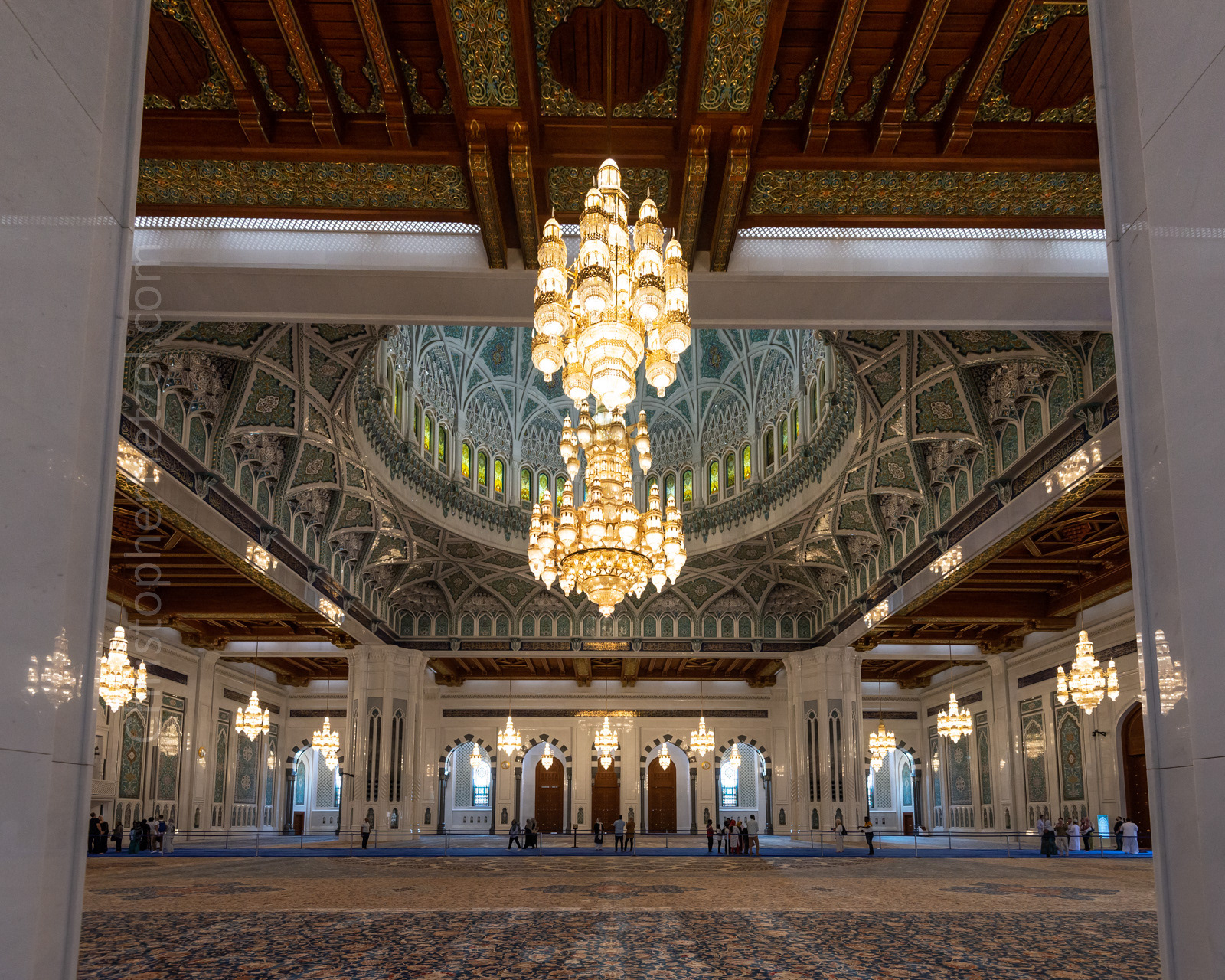
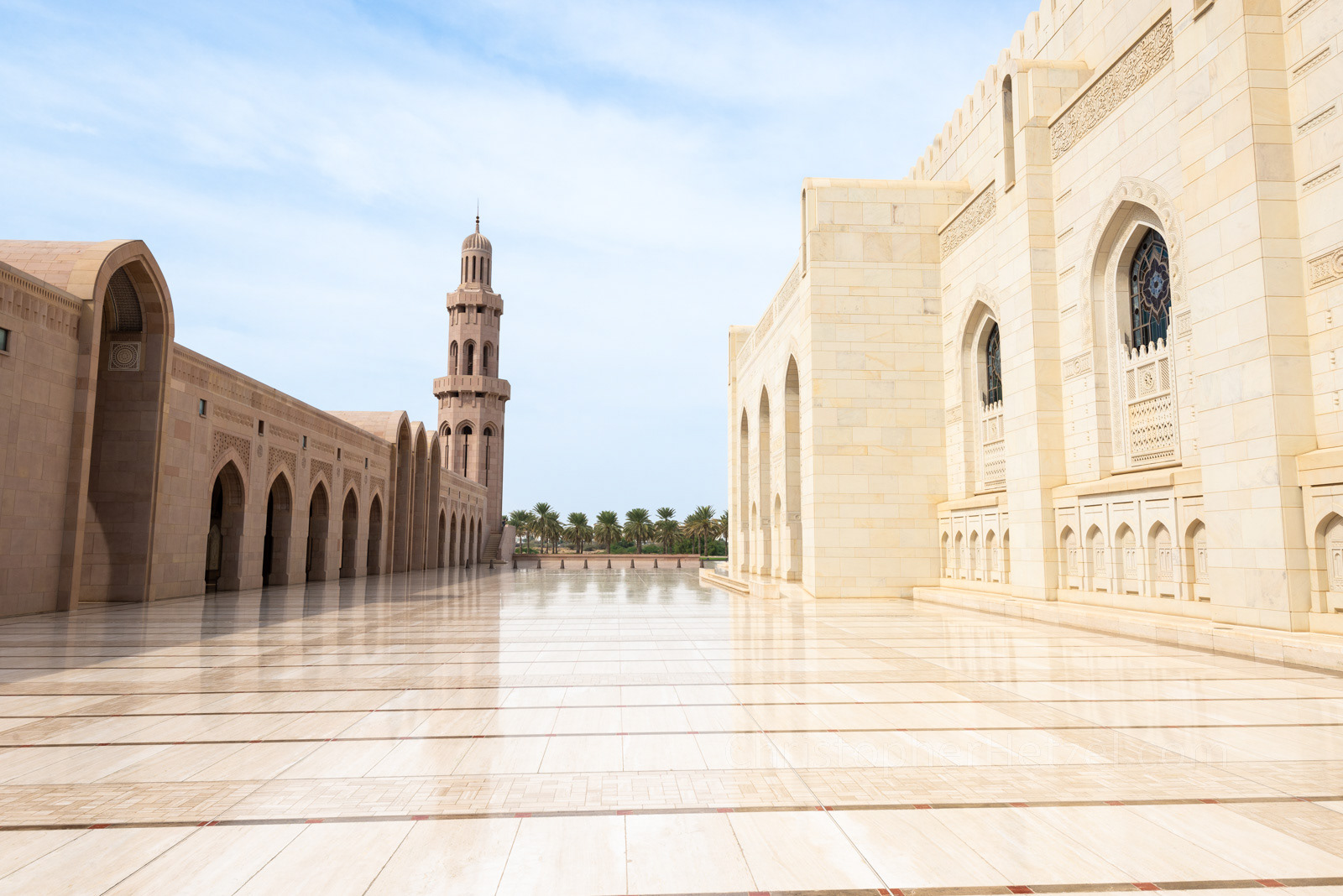
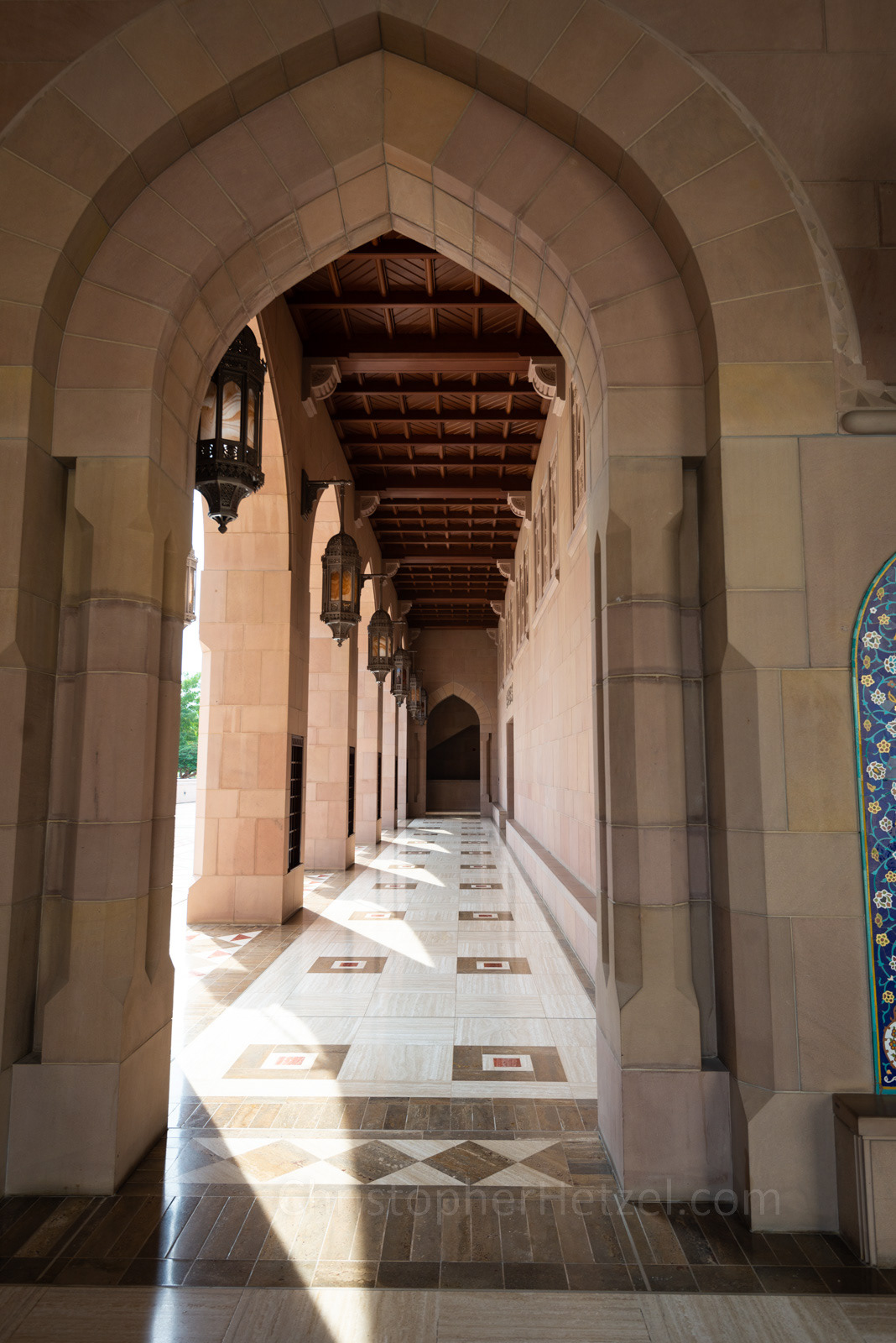
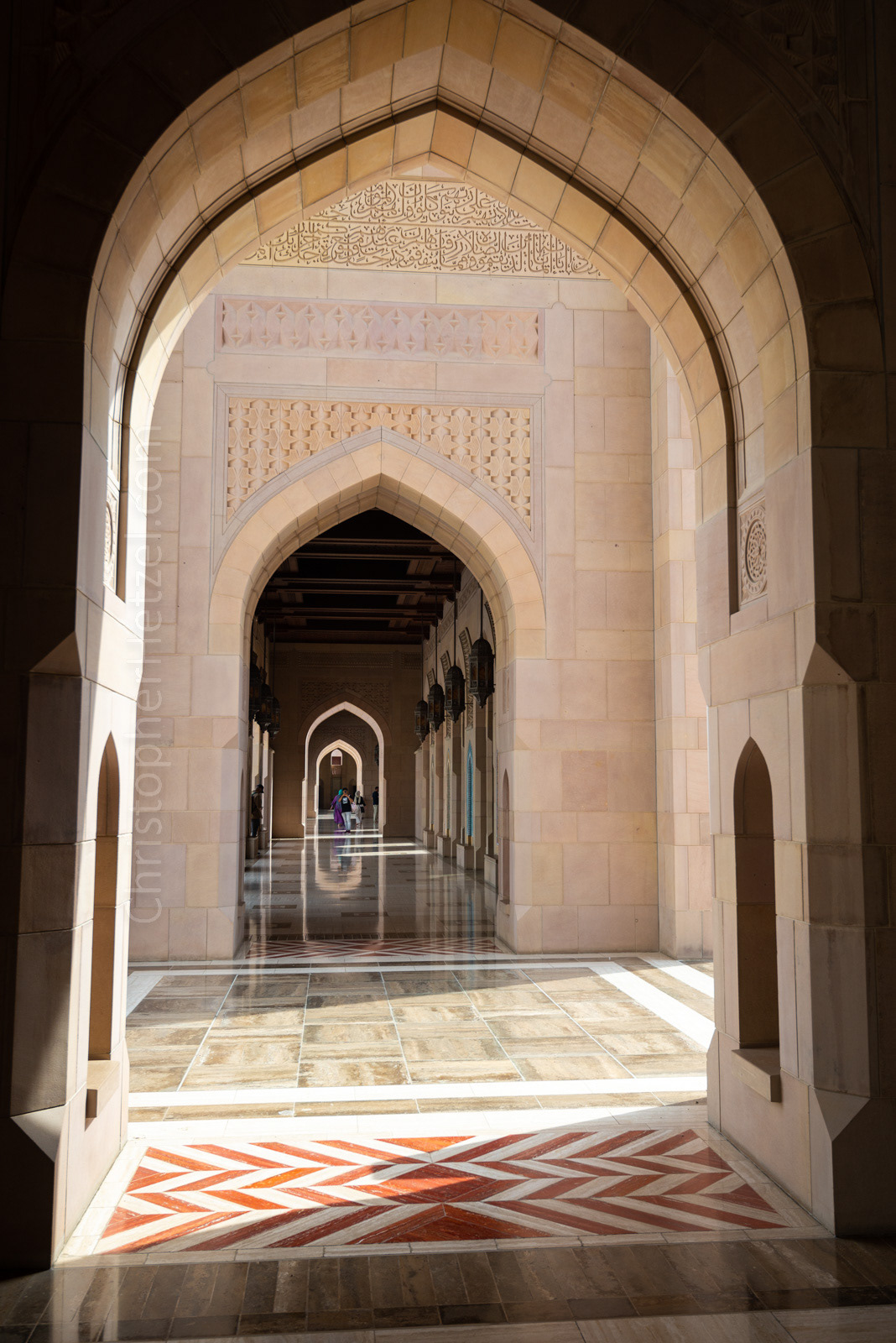
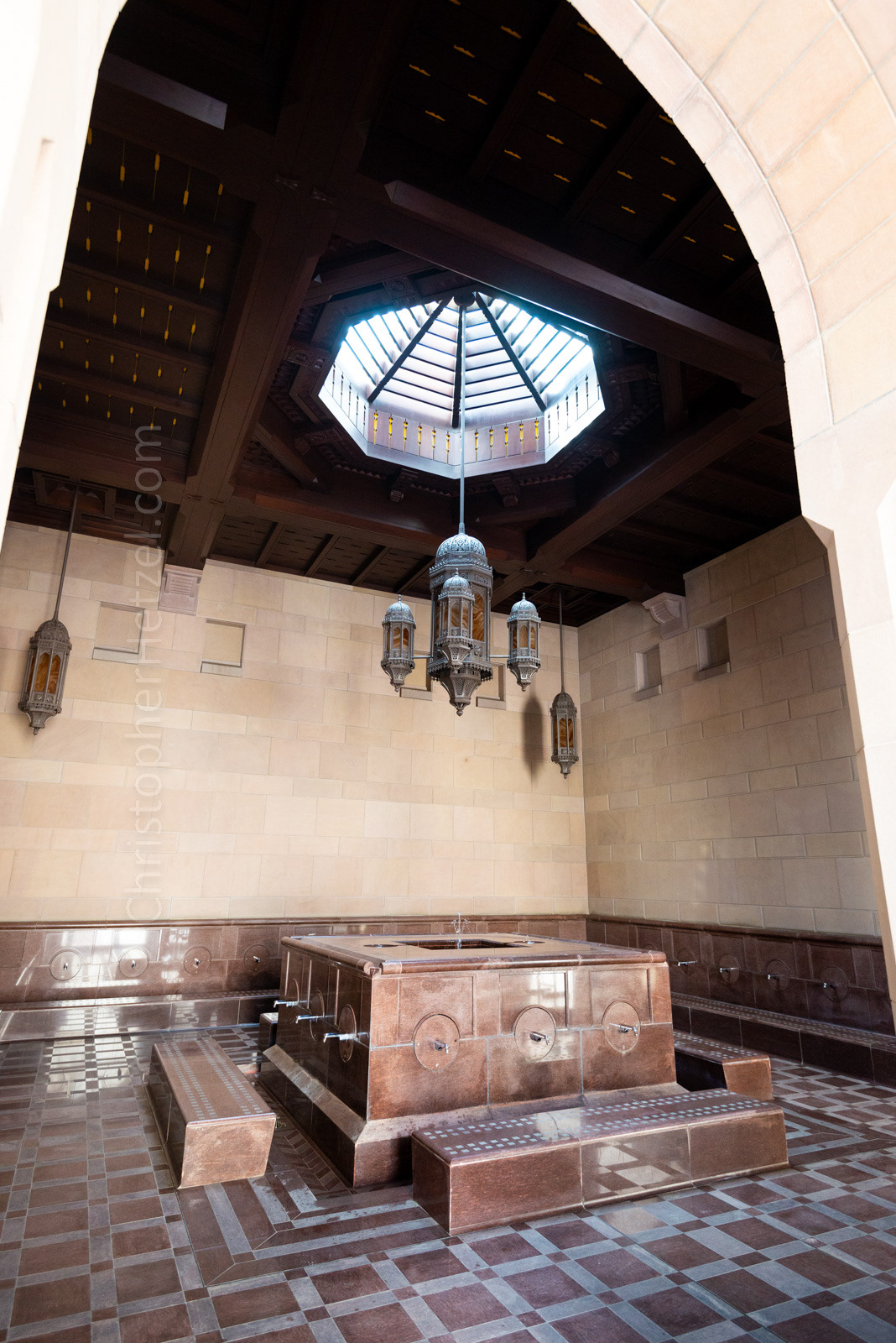
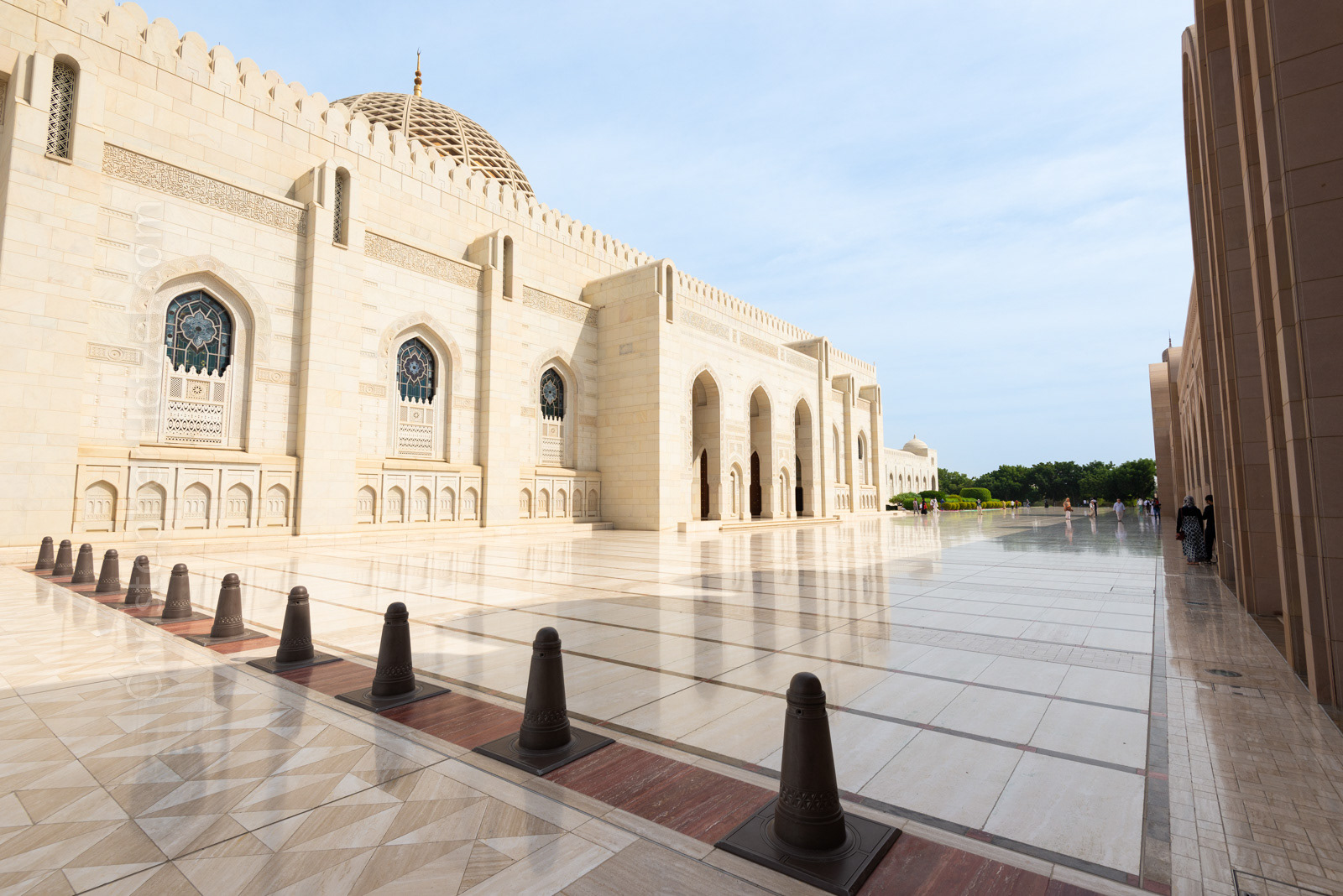
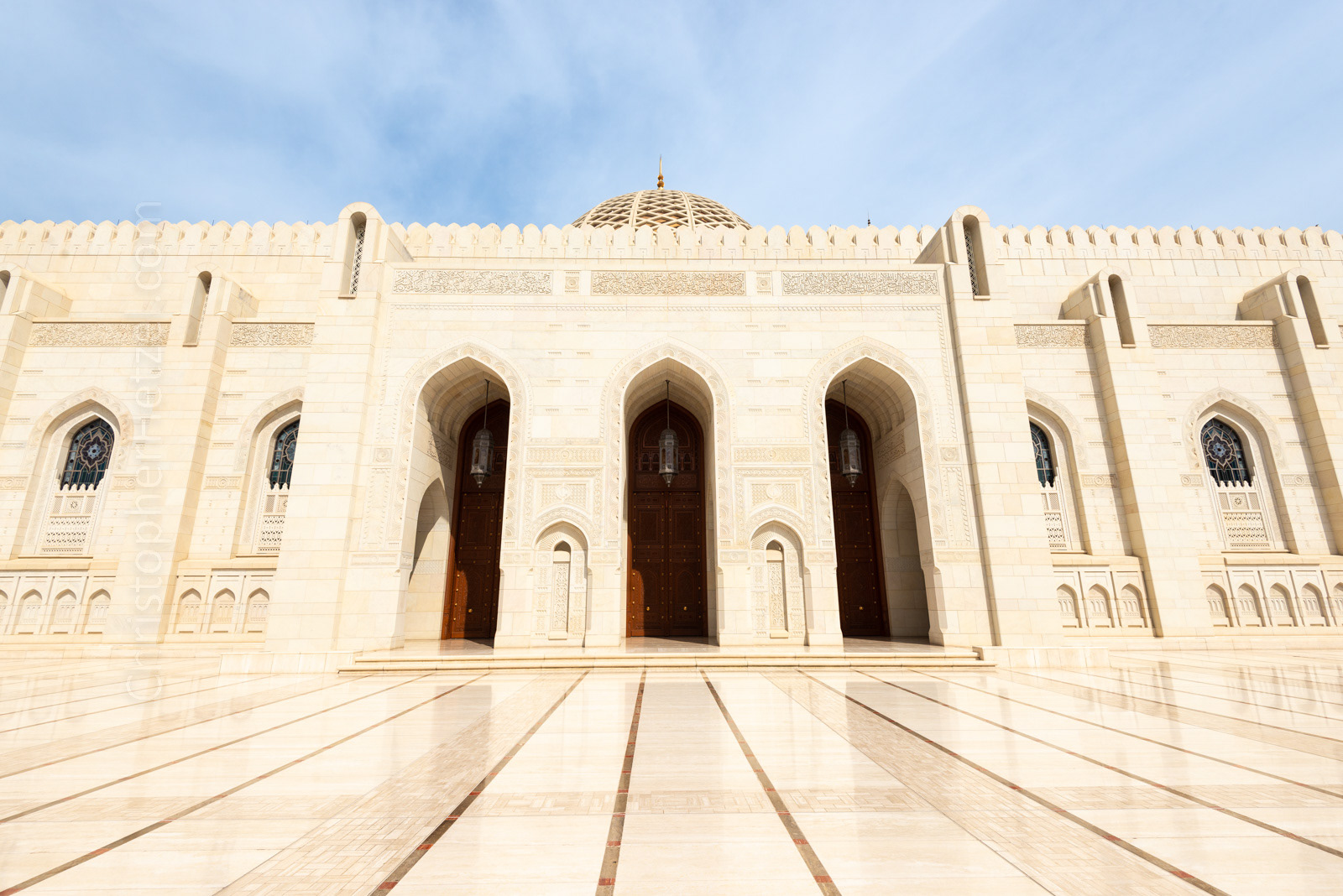
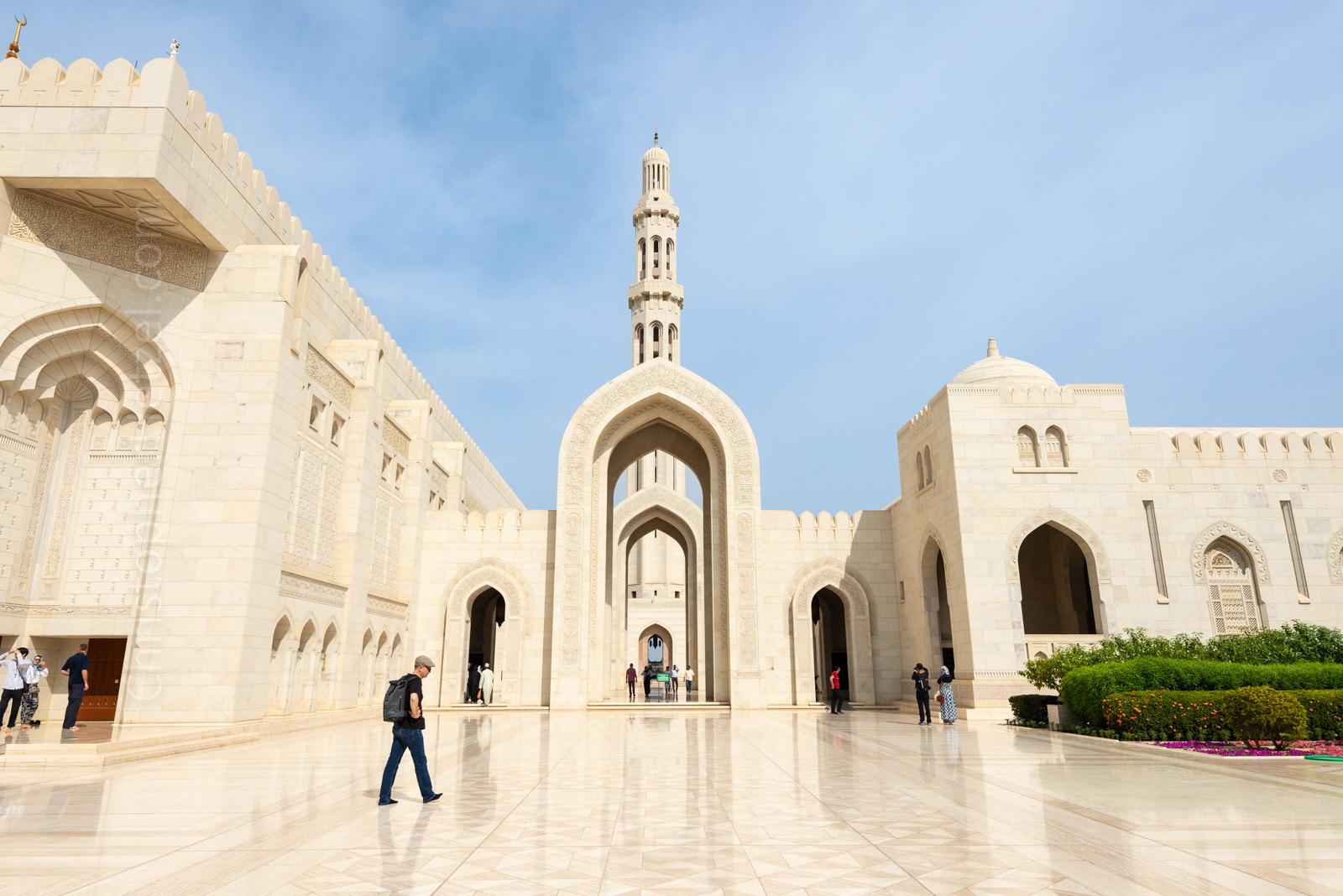

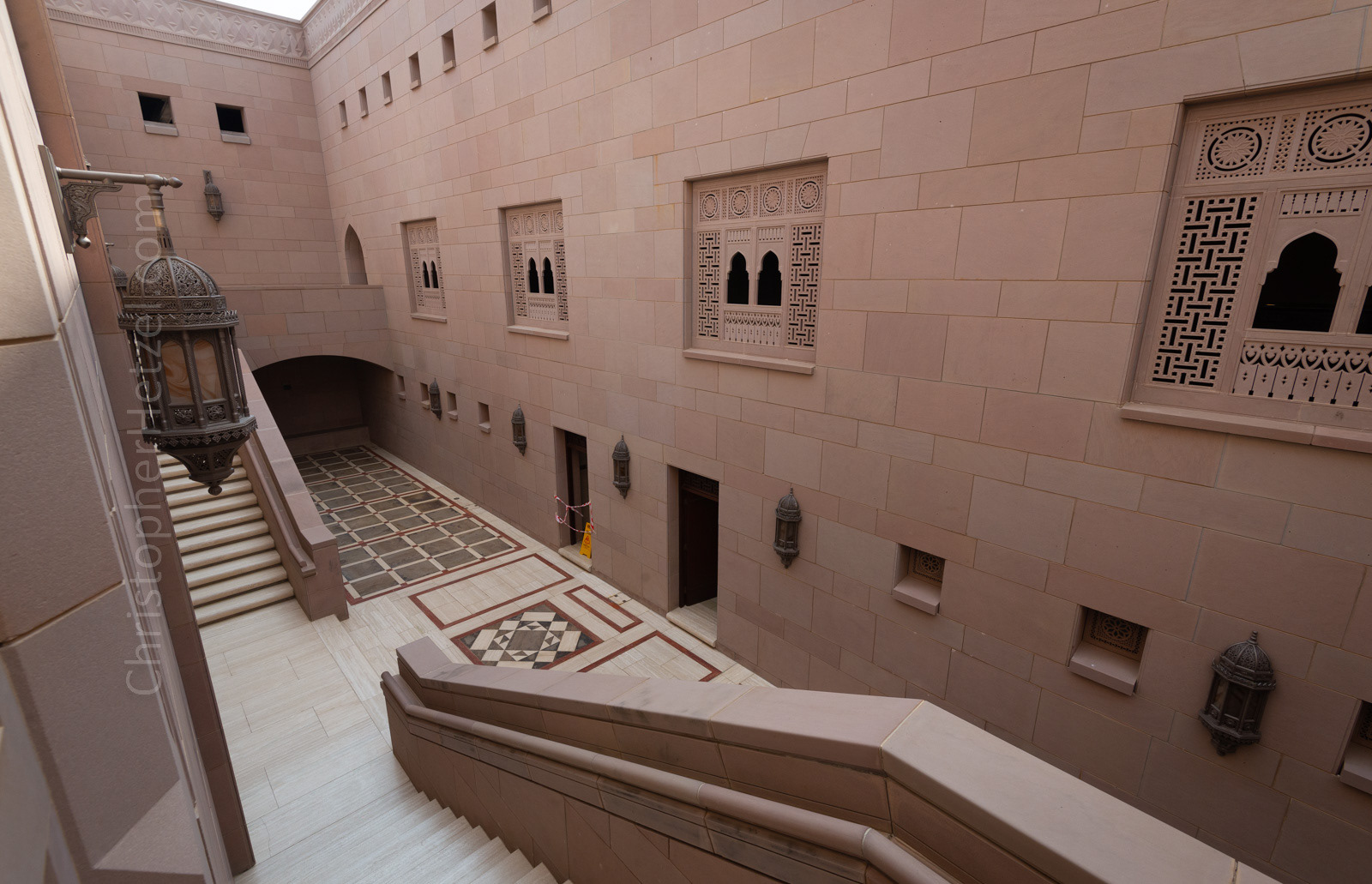
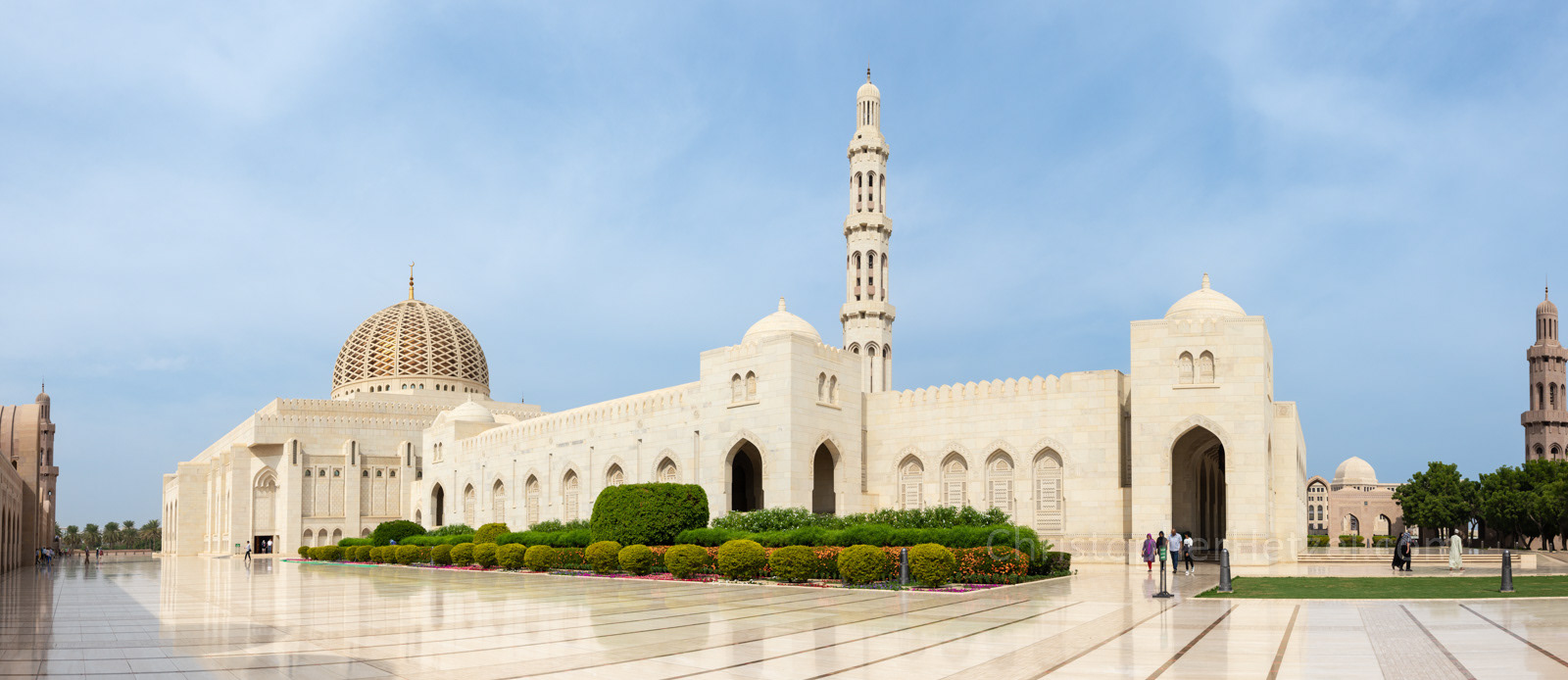
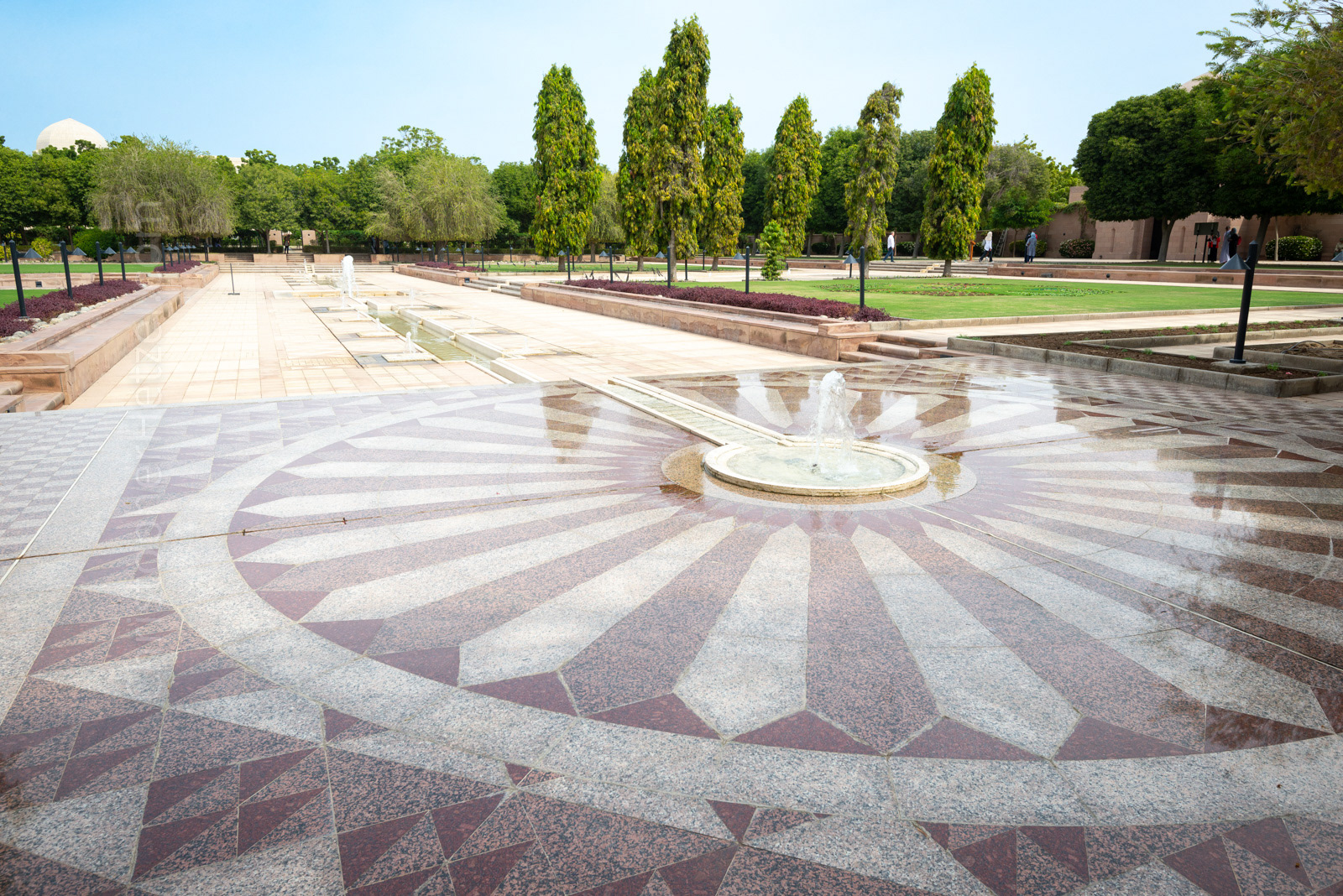
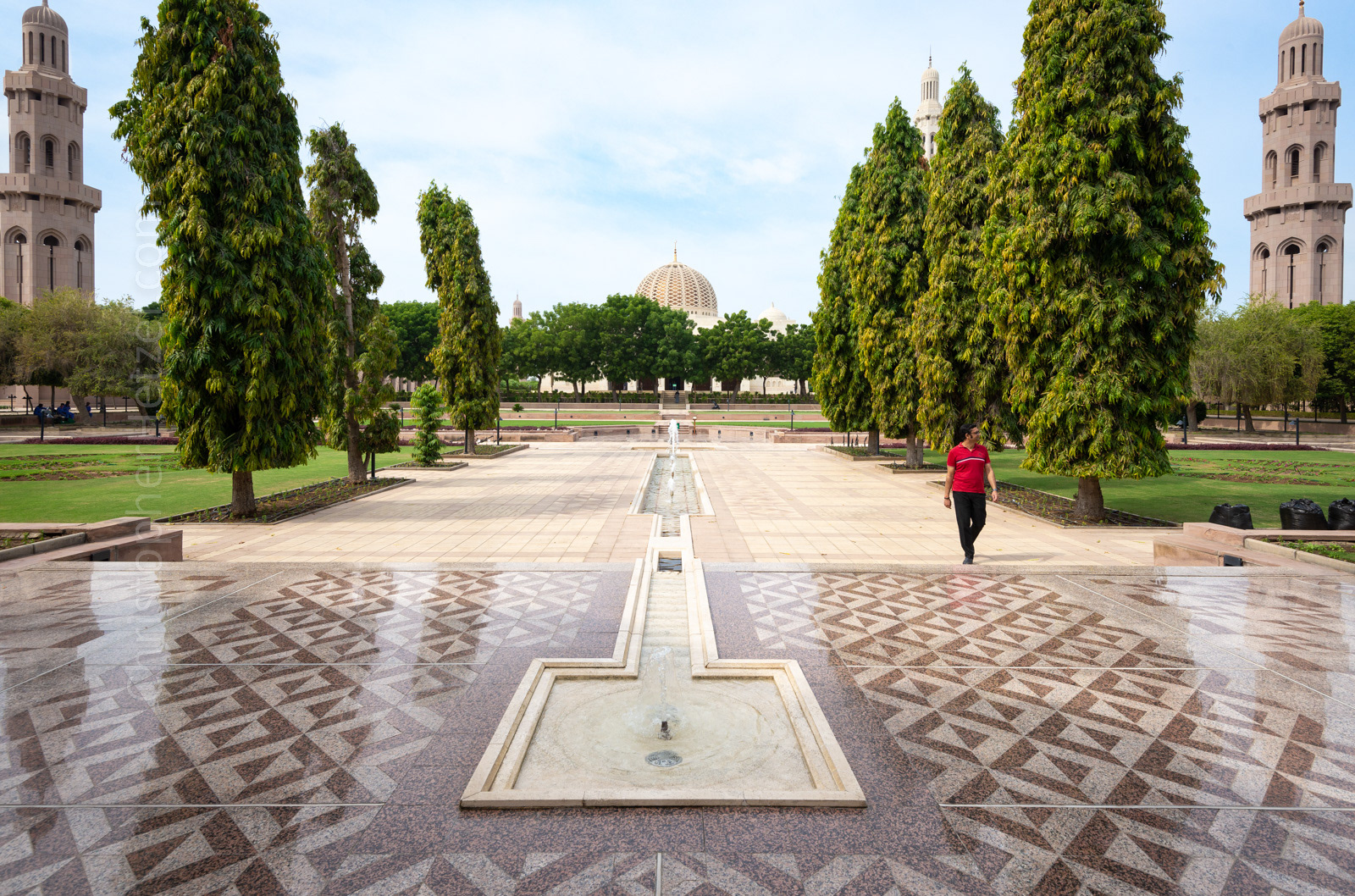
Back to Oman
